The Uros people live near to the town of Puno on Lake Titicaca in southern Peru. They live on floating islands made from totora reeds.
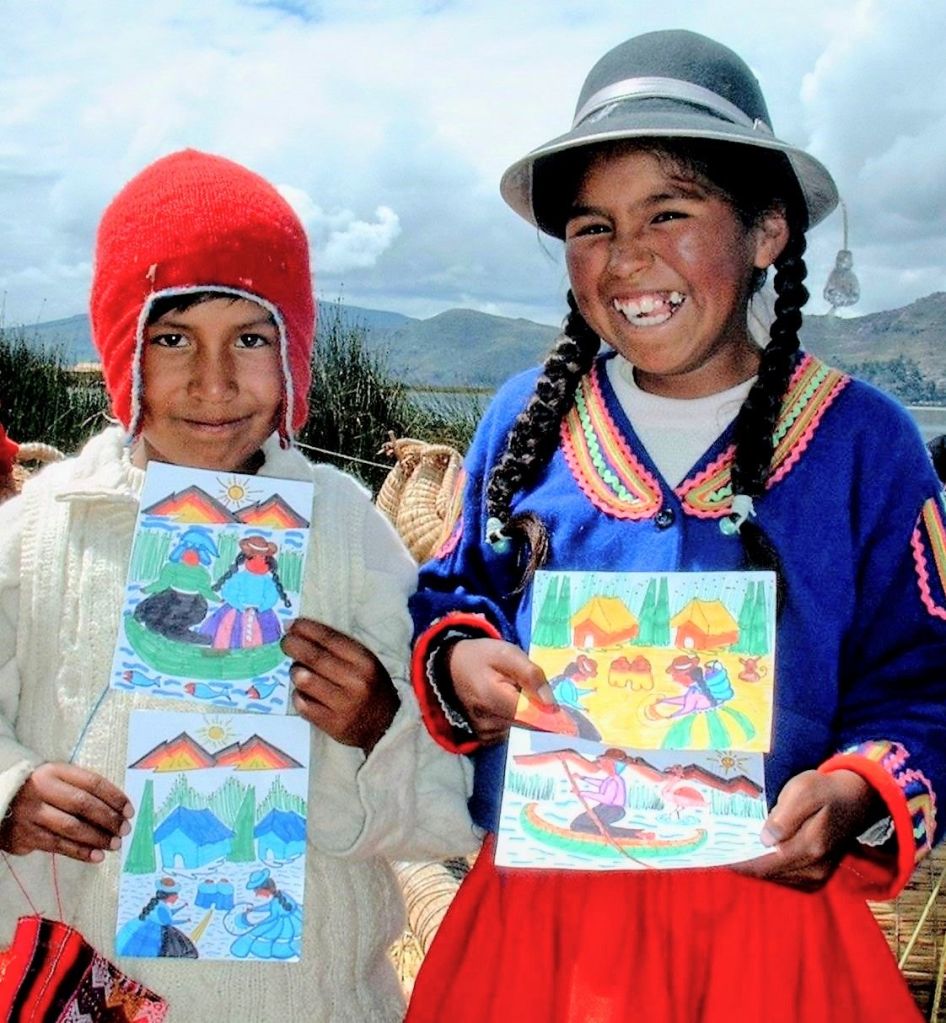
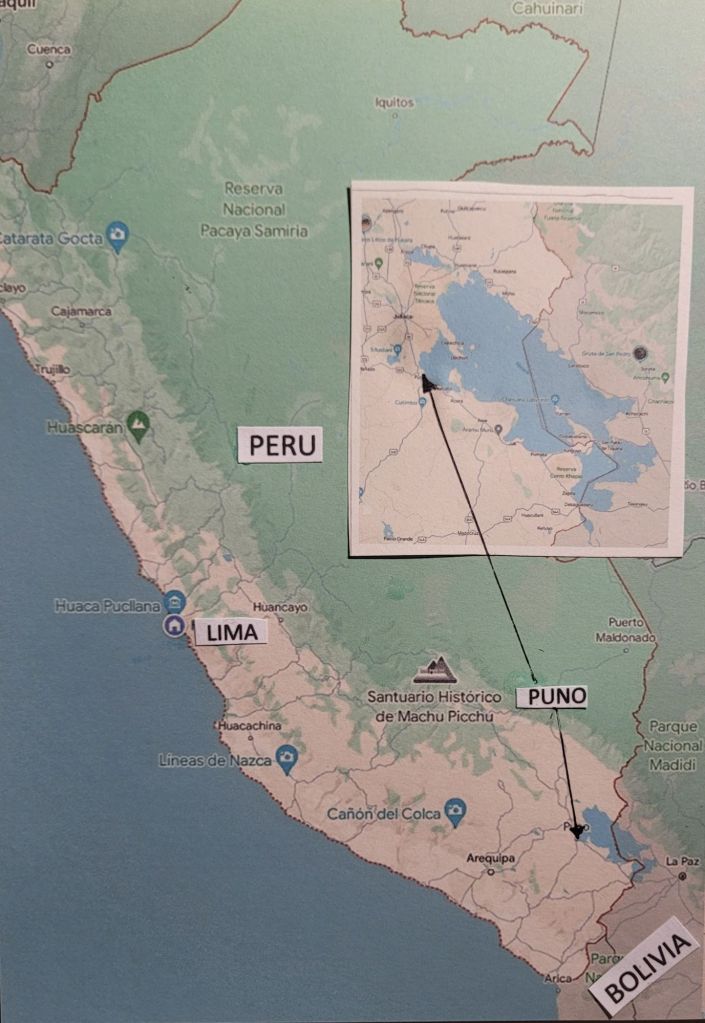
The Uros were always a people who dedicated themselves to fishing. About five hundred years ago, with the coming of the Quechua and Aymara people, the Urus decided to leave the land and establish themselves safely on these floating islands.

I first visited the floating islands of the Uros forty years ago when I was backpacking around South America. Later in 2003, I was invited by my brother-in-law to join a visit including the Government’s Minister for Women’s Affairs and the Peruvian television channel “America Television”.
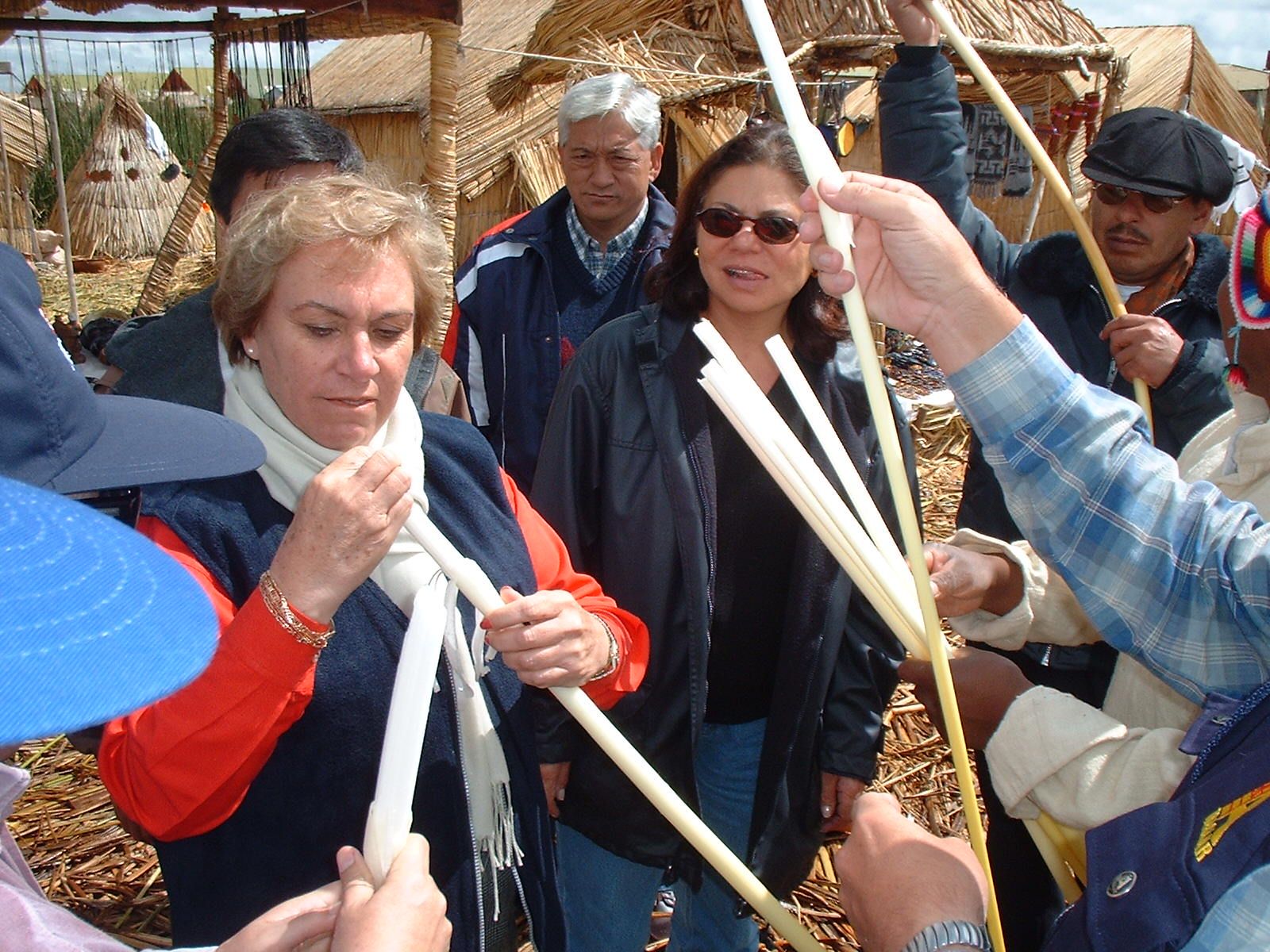
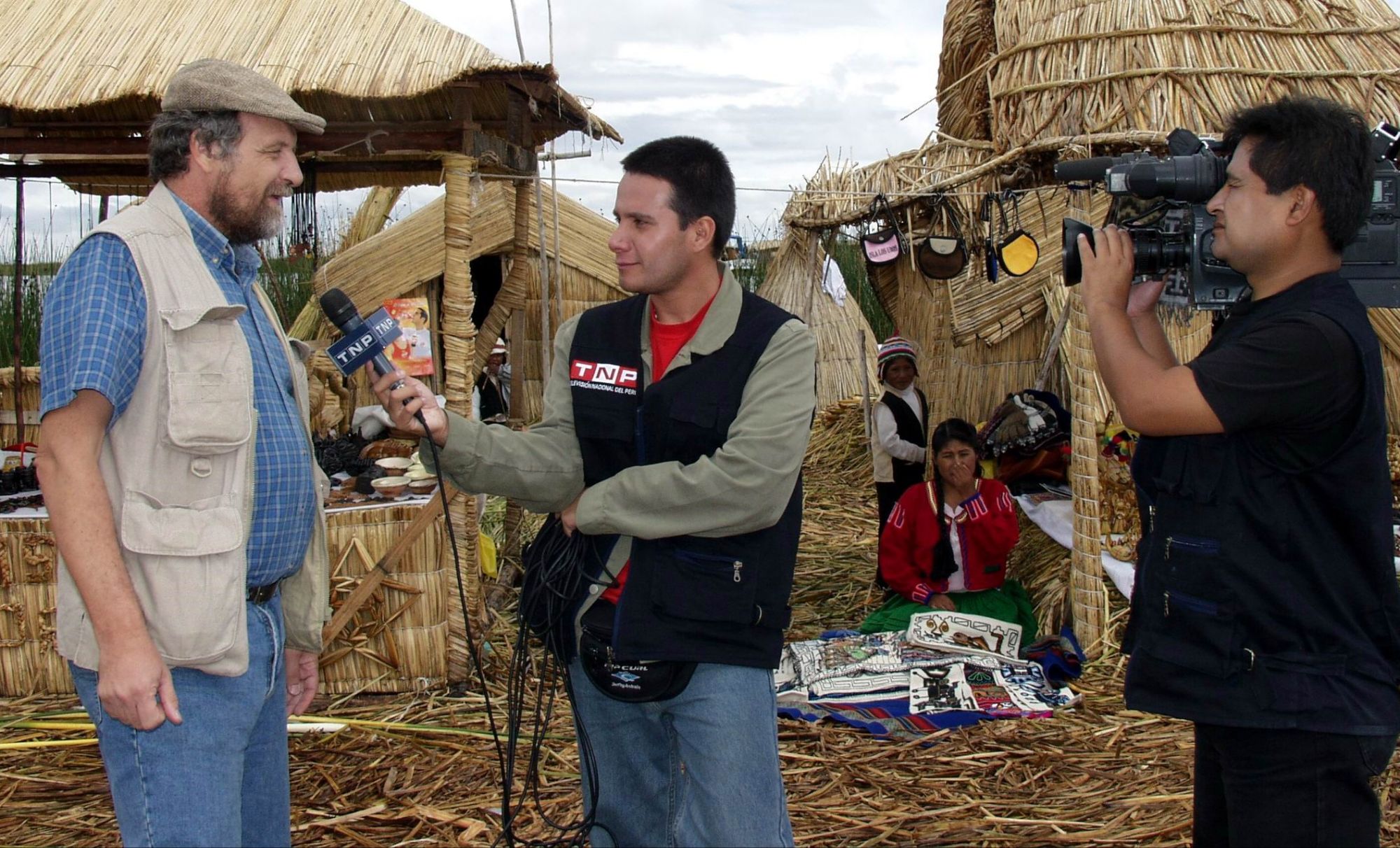
The third time was in 2010 with my daughters…… and even then, it was easy to observe the enormous changes that had happened since my first visit.
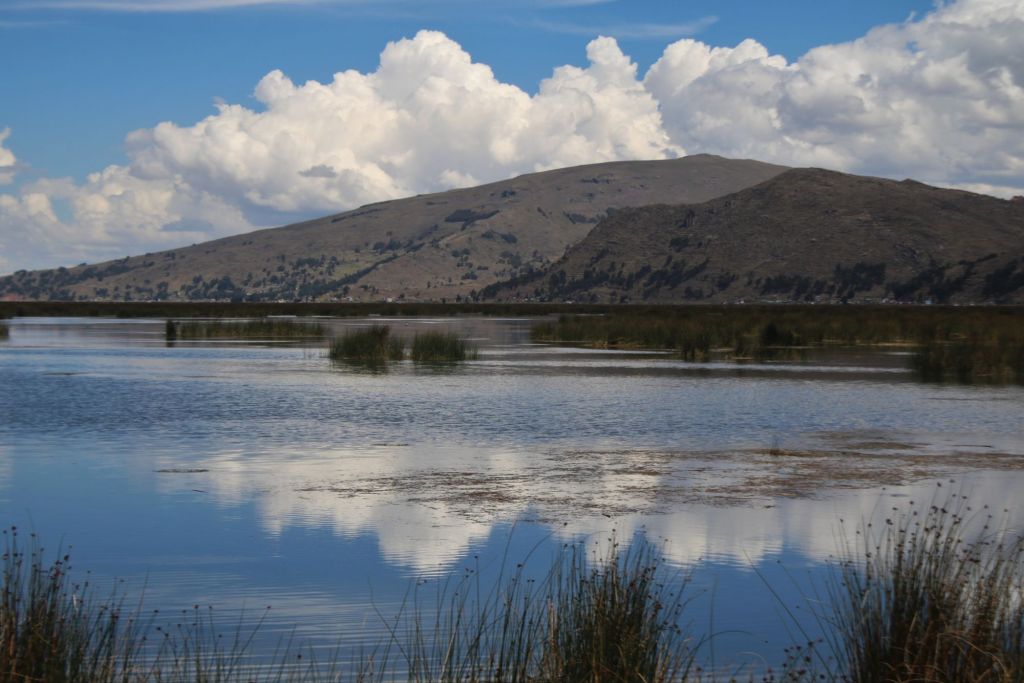
And here, I am again in February 2024, On this trip, most of my time to be concentrated on just two small islands talking to their “Presidentes”, Walter and Lucho. I would like to thank them both for their time, their patience as well as their good humour. I have just sent them both the photos of the visit.
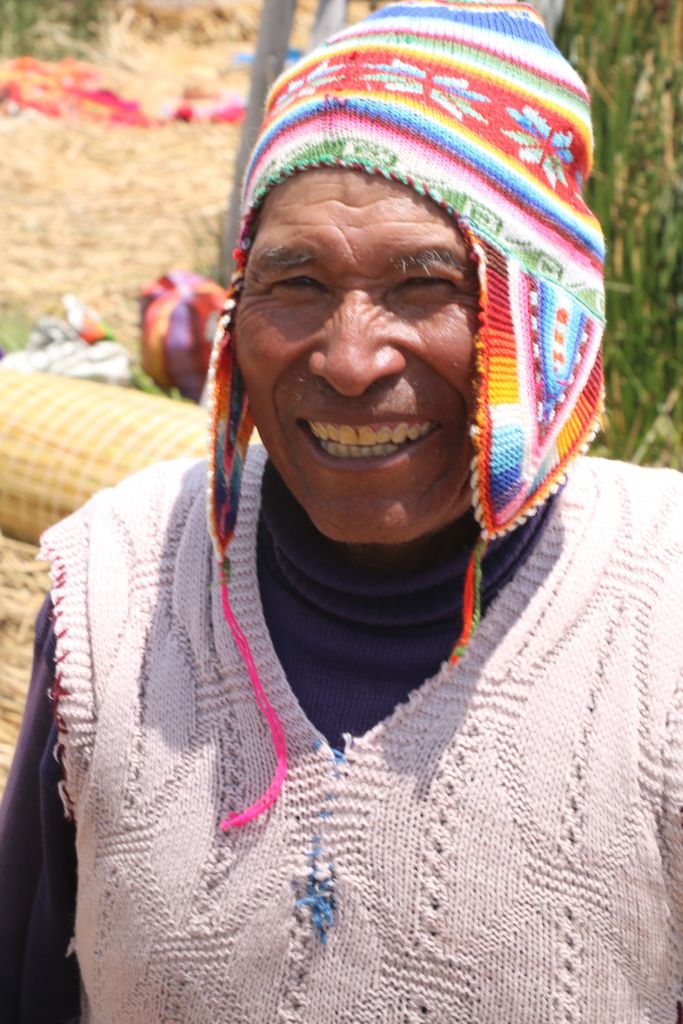
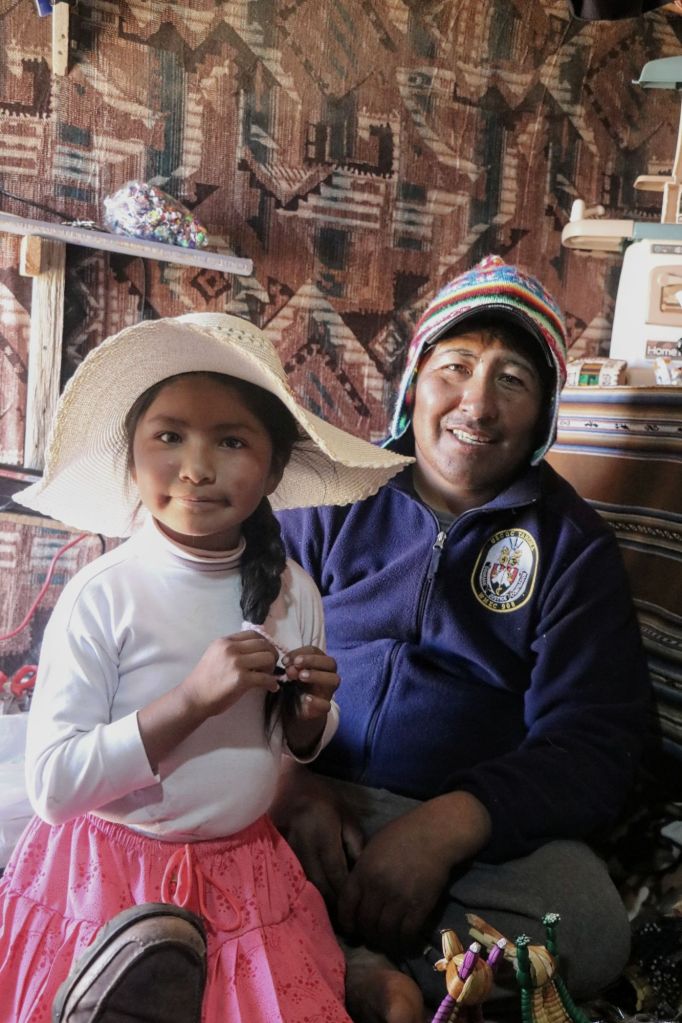
On Walter’s island live five families and on Lucho’s island just four. Years ago, extended families lived together on each island. However, now the family members make their own islands, joining up with other families.
Lucho told me that a number of years ago, he actually towed his little island from the other side of the bay to this present, more secluded spot. His eldest children are living on other islands. However, although he is 73 years old he still has a thriving family living at home.
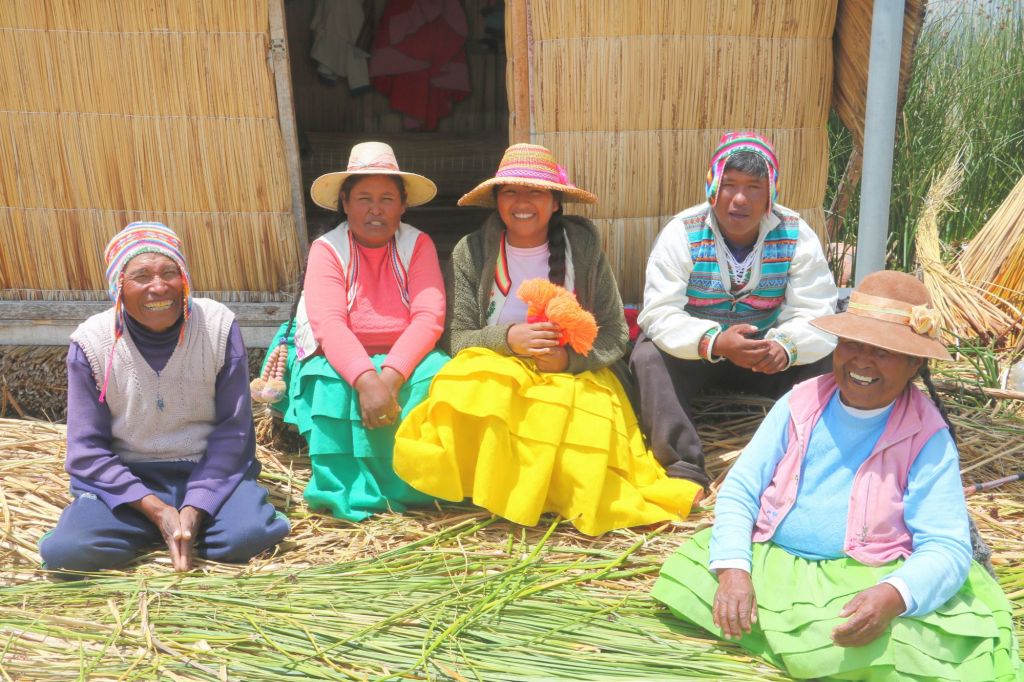
The base of each floating island is made from the roots of the totora reeds. Blocks like these in the photo below, are lashed together to make platforms measuring about 3 metres by 10 metres. These are joined together with other similar platforms to form an island of the desired size. Walter’s island, for instance, has an area of 300 square metres,
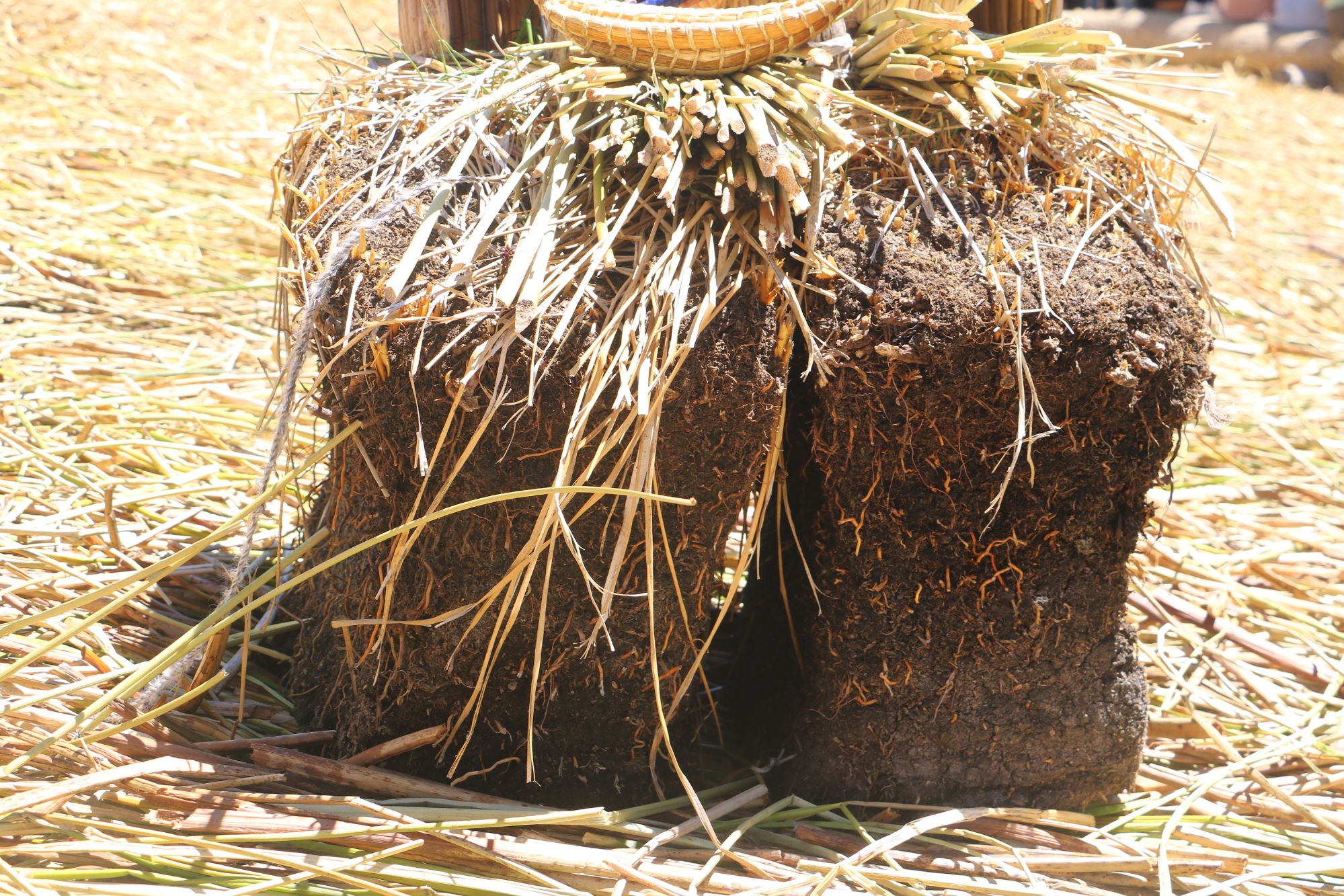

These platforms are then covered with a carpet of loose totora reeds. Every two weeks or so, a fresh layer of reeds needs to be added,

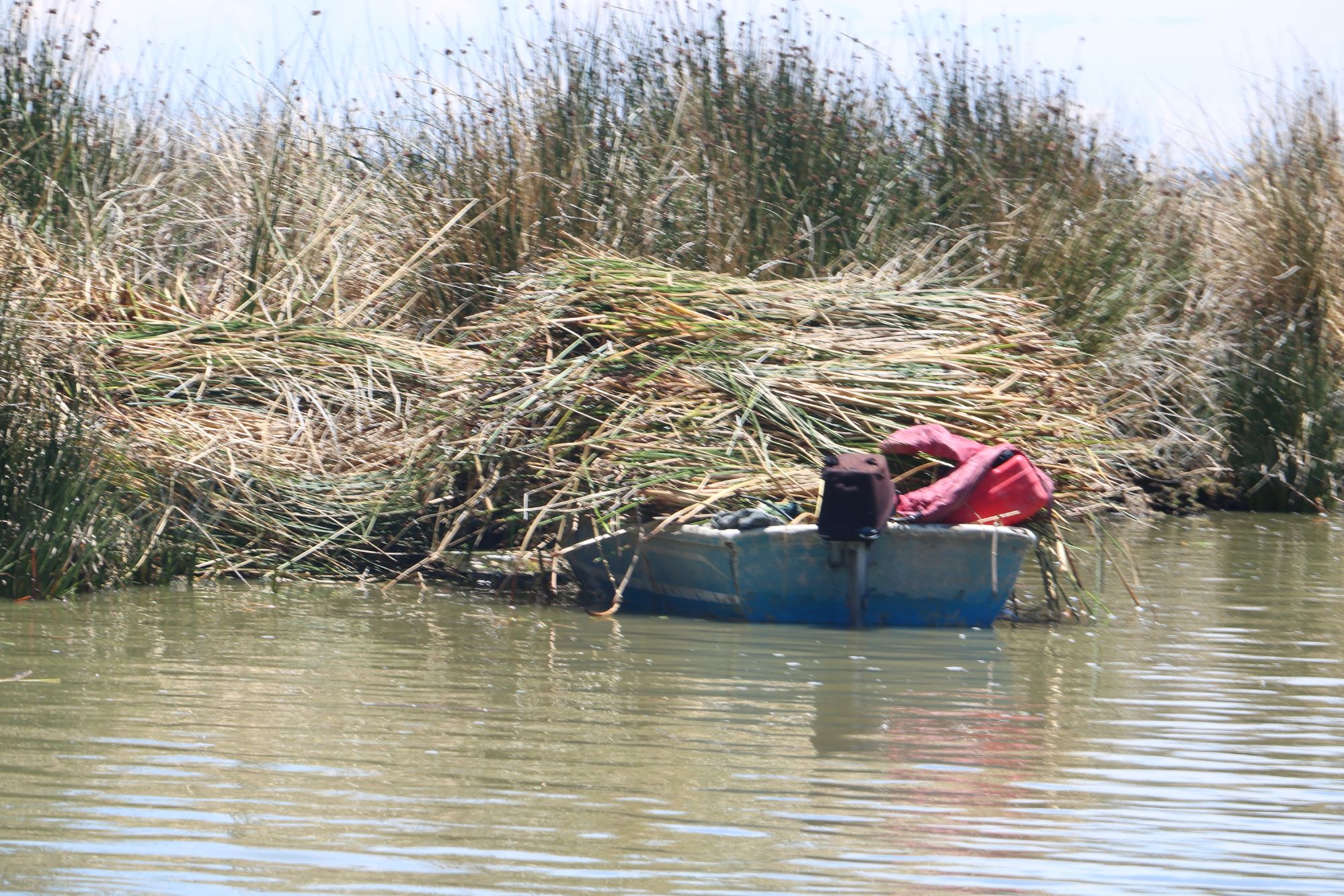
Here, Lucho dug a hole through the platform. Then, with a stone attached to a string, measured that his island was resting on top of fifteen metres of water.
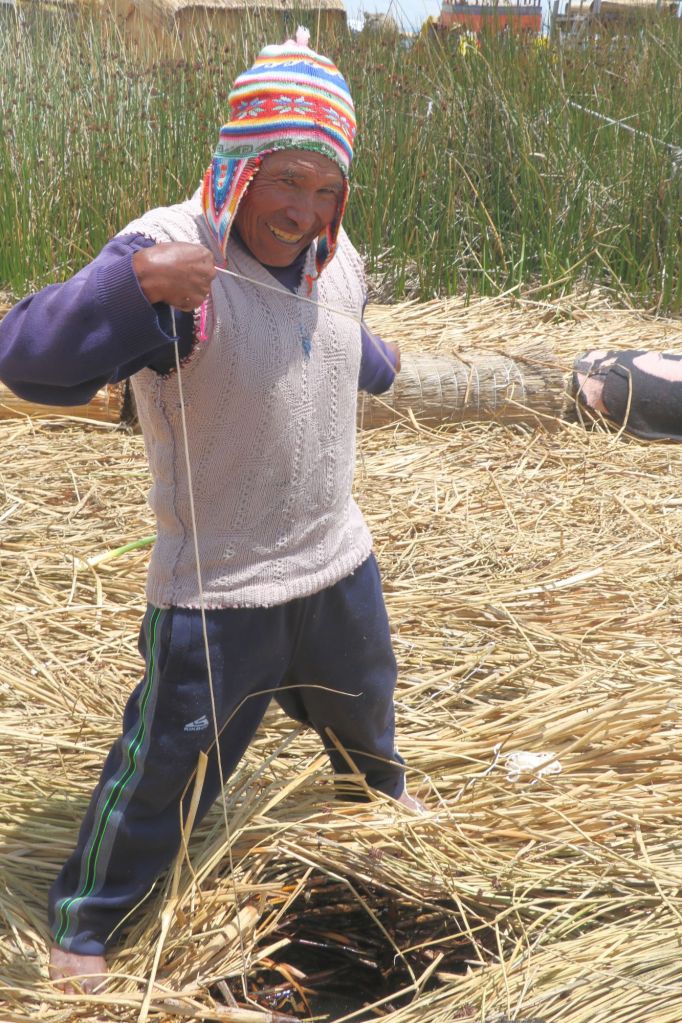
It was indeed surprising to see how many islands there are now. When I first came, there were only about thirty islands. Now there are more than a hundred. Some houses now have brightly coloured corrigated iron rooves. This tendancy began with a subsidy from the government during hard times some years ago. However, this is not seen as an improvement. Walter made the point that tourists want to see the traditional houses with tortora rooves. Lucho, practical as ever, stated that he would never have a corrigated iron roof… “Much too hot in summer, and much too cold in winter. The Totora is far better.” Many seem to agree with Lucho and the use of corrigated iron for rooves has diminished greatly.
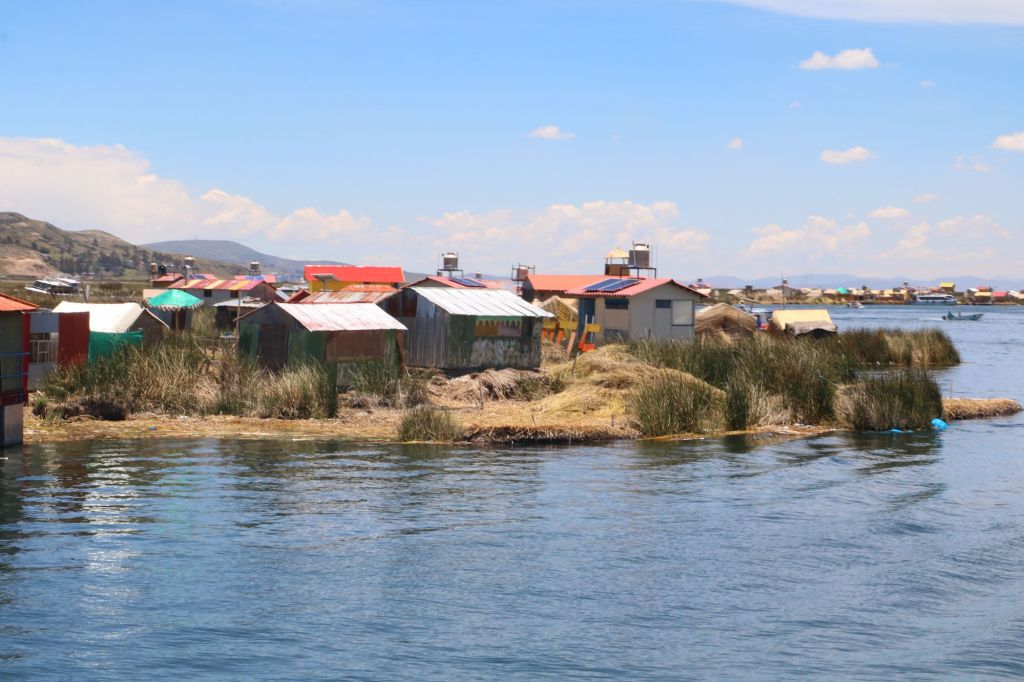
The evidence of a healthy tourist industry is evident. In the port of the town Puno, numerous launches are eagerly waiting each morning for the tourists to arrive. Most boats take from ten to fifteen passengers.
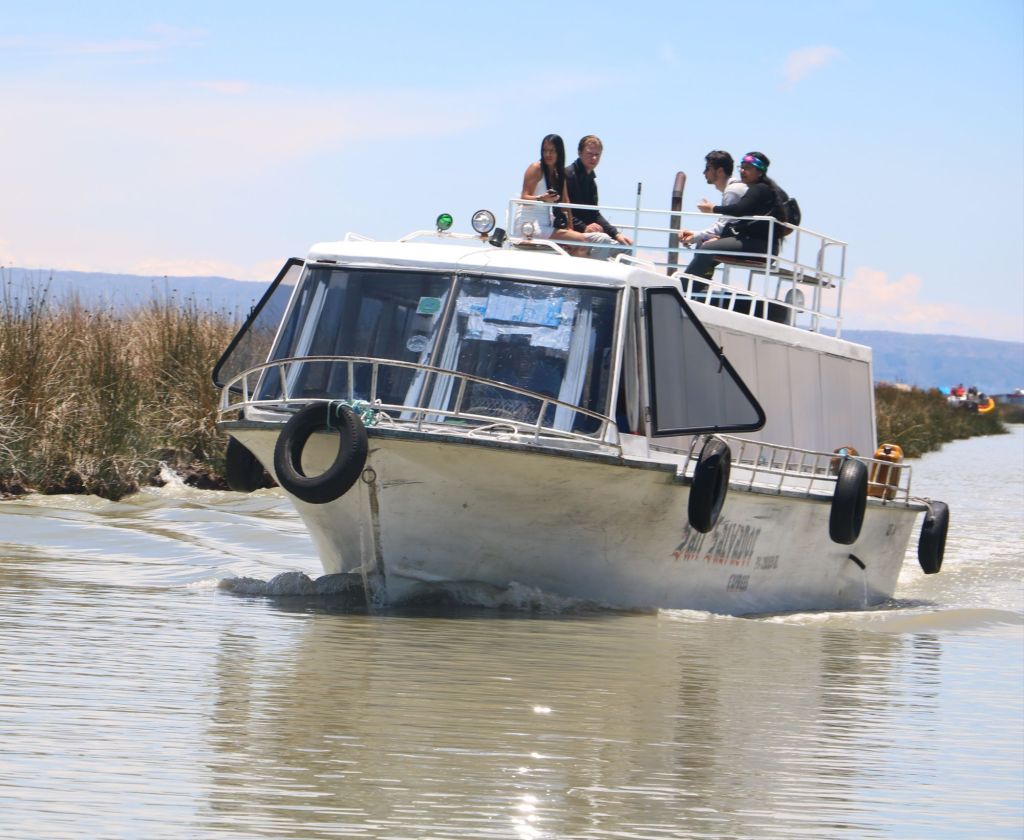
Over the last five years another little artisanal port, quite near to Lucho’s island has become established. It is about five kilometres from the centre of Puno and operates with smaller boats.

I asked Walter and Lucho how the economy of the islands had changed over the last thirty years.
Before the explosion of tourism the villagers led a subsistence way of life based on fishing, hunting birds and collecting birds’ eggs. These were taken into town and bartered for vegetables and other household goods.

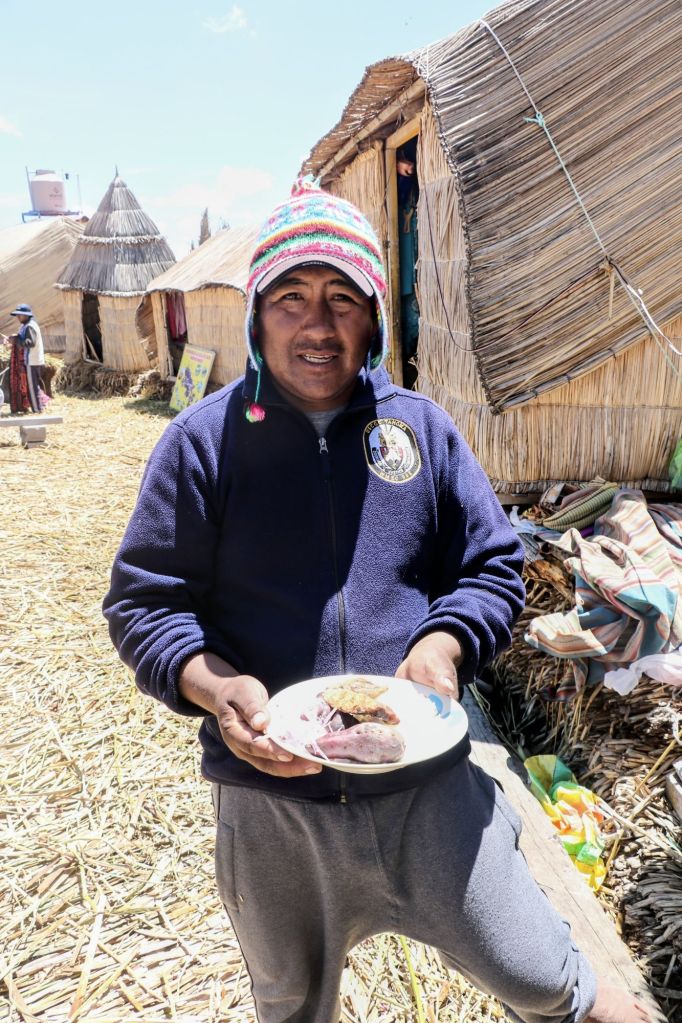
With the growth of tourism the villagers had to adapt to a new economic reality. Even so, with more than a hundred islands, there are not enough tourists to go round. Each tourist visiting the island needs to buy a ticket for 5 Soles ($US 1.40) This money is distributed among the islanders. The local cooperative organization of islands then works out a schedule, whereby islands are assigned days when islands will (or will not) receive tourists. Walter’s island receives tourists once a week, and Lucho’s, being a small island just once every month.
On the days with no tourists the traditional task of fishing continues. However, a lot of time is now spent making artisanal goods. The islanders soon learnt that simple souvenirs, such as those made from totora reed could sell very well to tourists bringing in a very tidy profit. They had to learn new skills in order to make these articles and over the years have become experts in their different specialities.
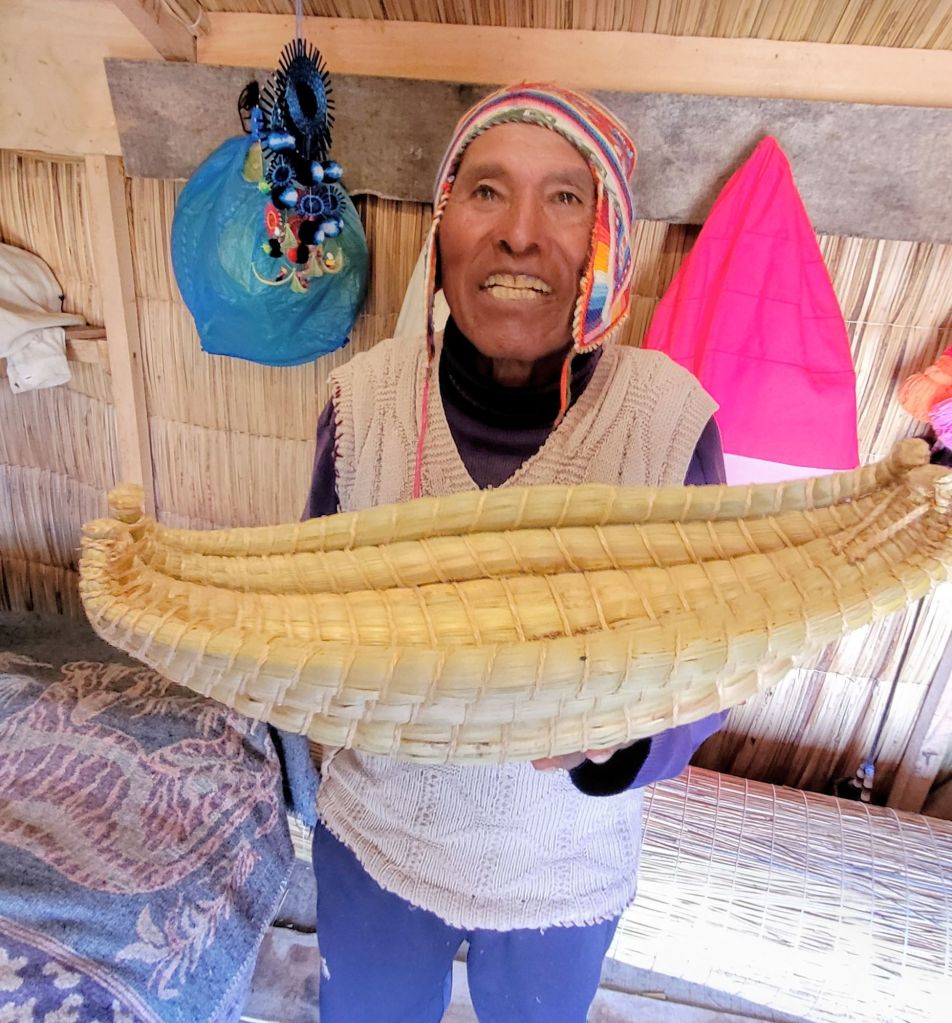
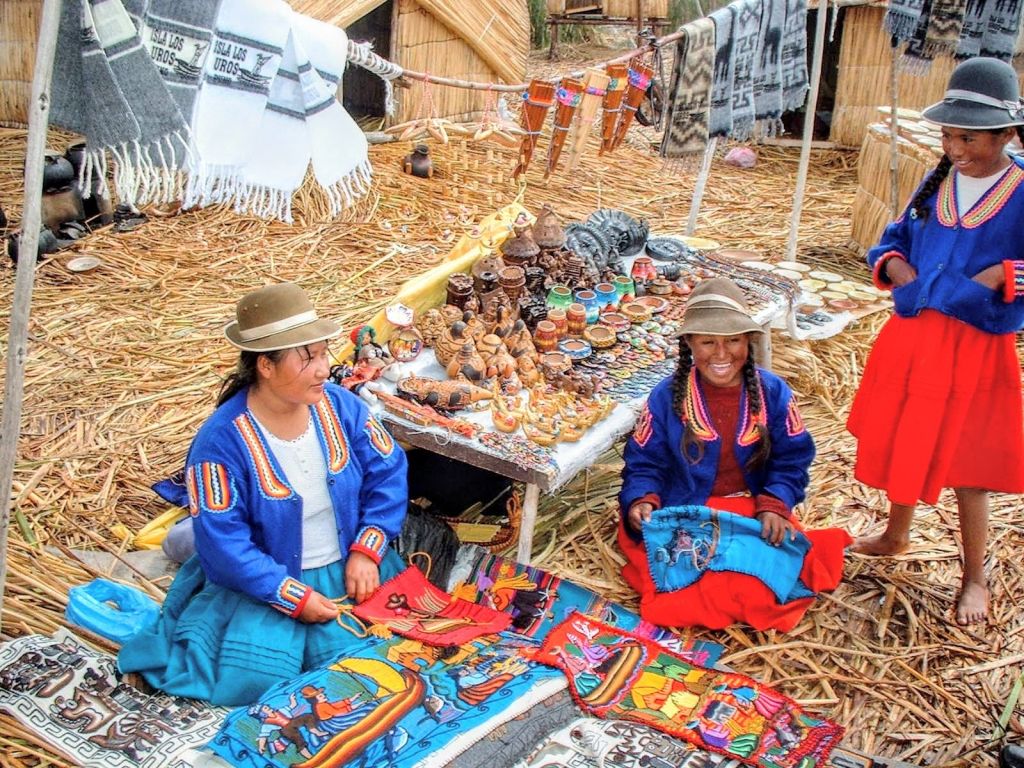
The traditional boats are also made of totora reeds and are still in regular use. However, some islanders now have ordinary boats and even outboard motors.

However, to provide extra income they now also construct large, goudy totora craft, on which they can take the tourist for a ride for a small but useful fee!
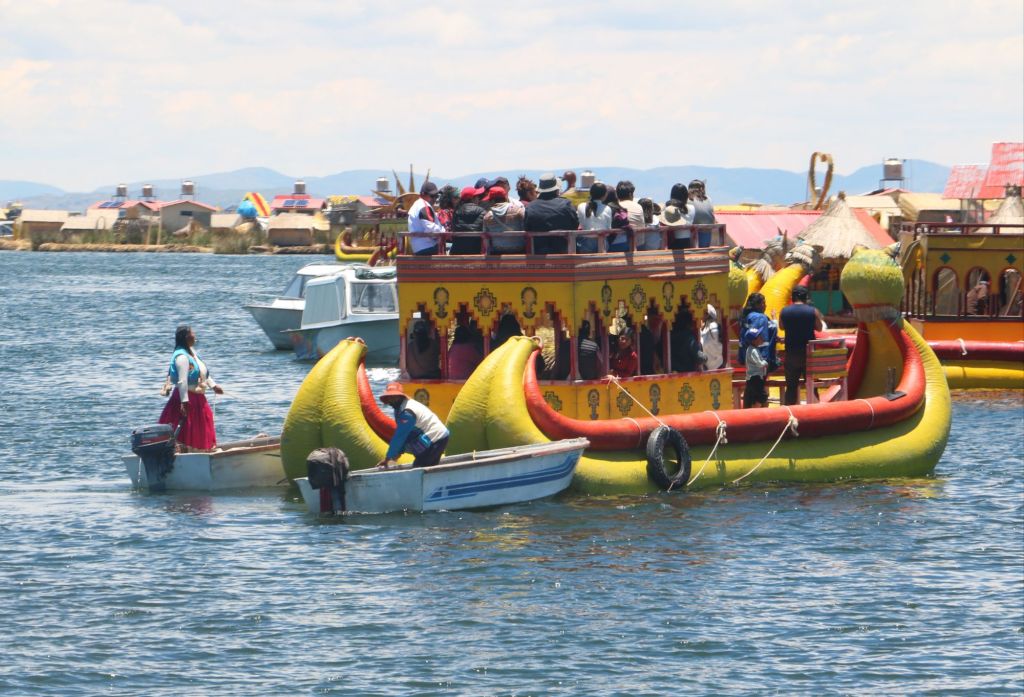

Despite the effect of tourism, life on the islands remains very simple. Generally the whole family live in one room.
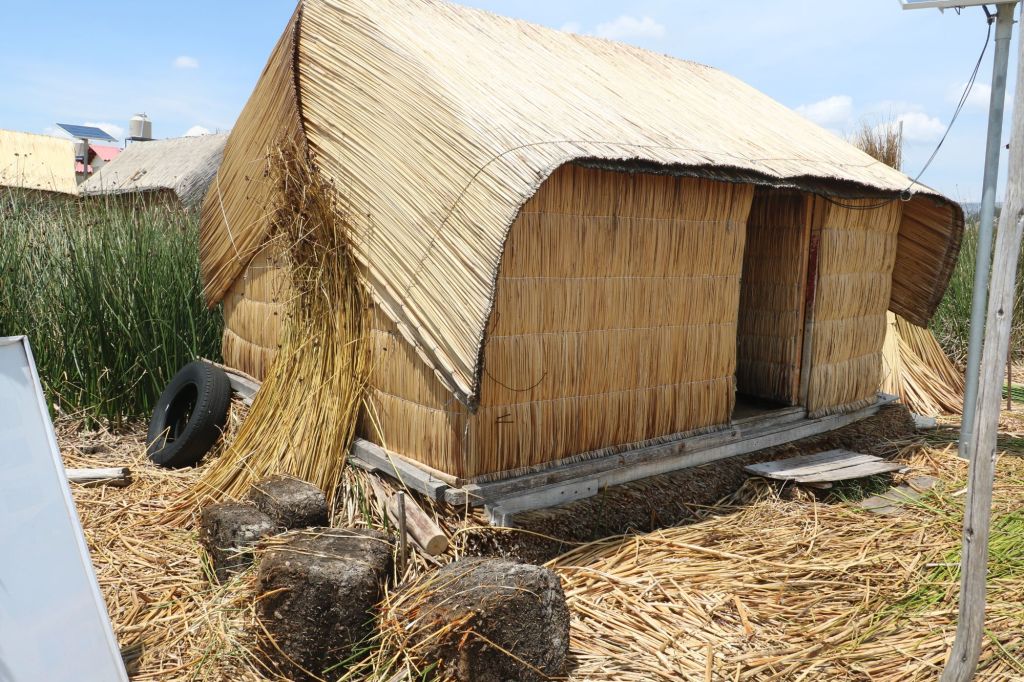
They have few possessions, basically some beds and blankets for the whole family. Clothes and possessions are hung from lines on the walls.
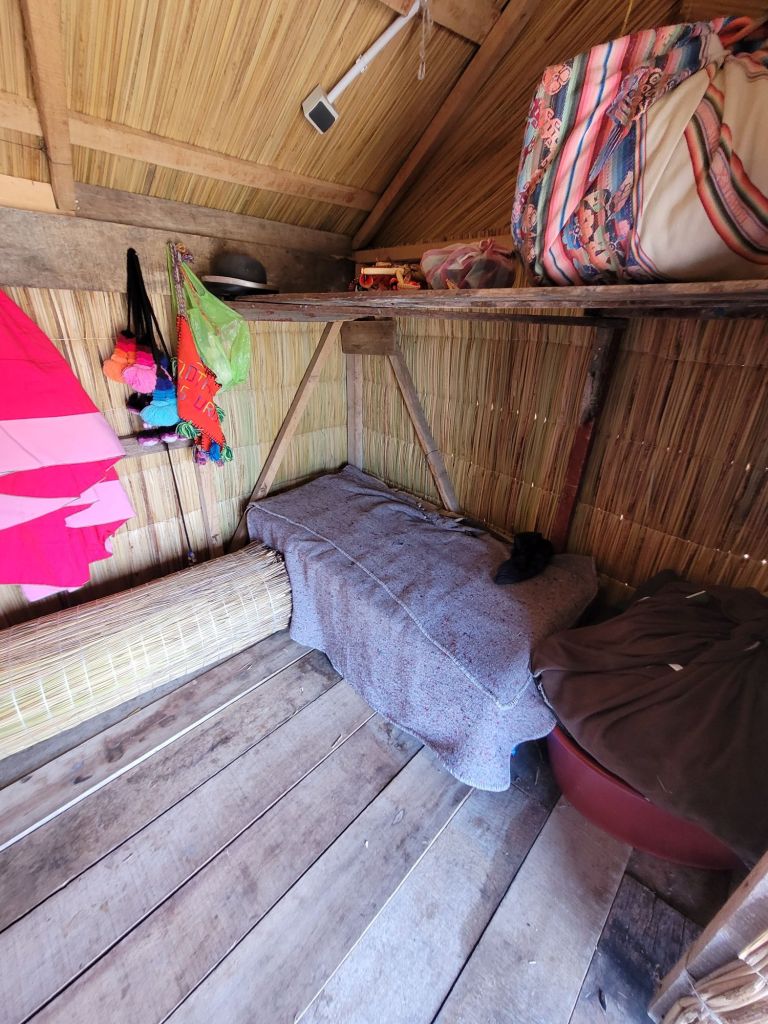
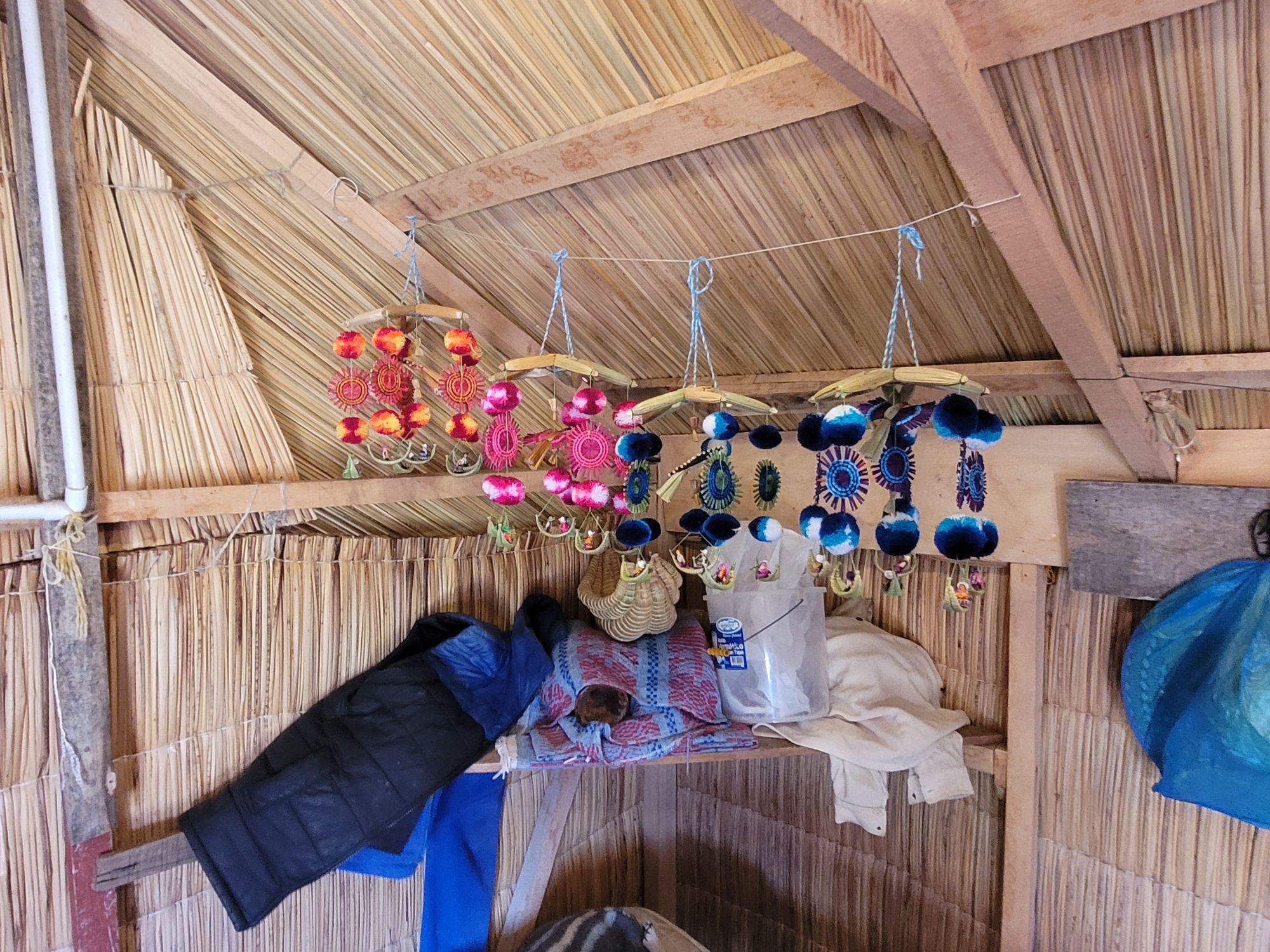

The islanders also now have solar panels on their islands.
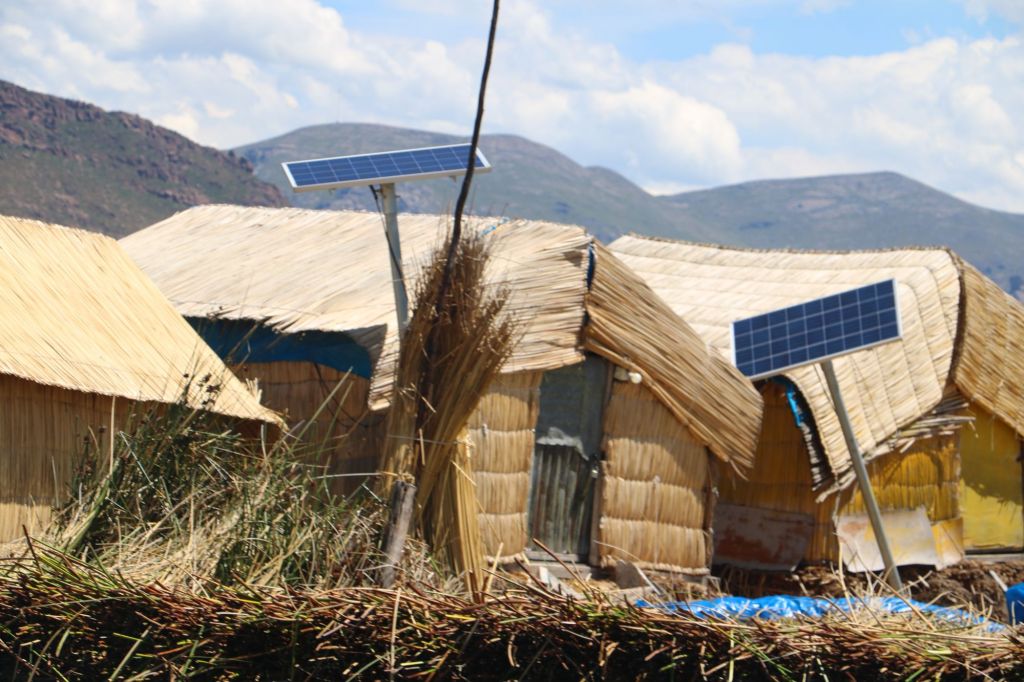
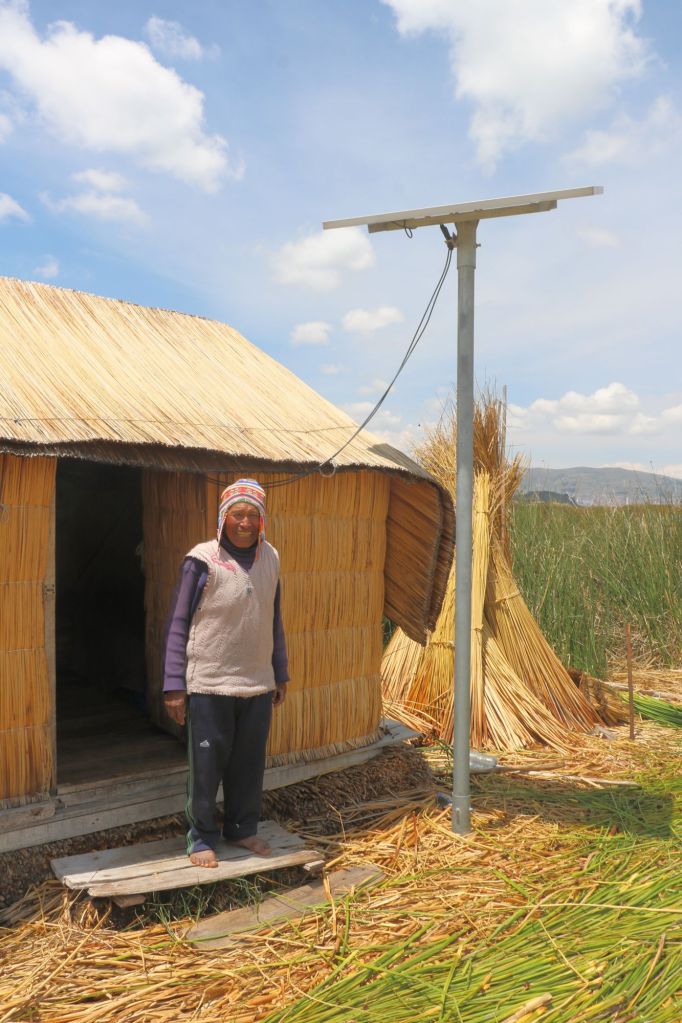
This is connected to a battery in the house. There is enough current to provide a source of light in the houses and to charge telephones.

There were no televisions or other electical artefacts that I could see on Walter ‘s and Lucho ‘s islands. The only exception was a solar panel powered water pump for their relatively new toilet instalations.
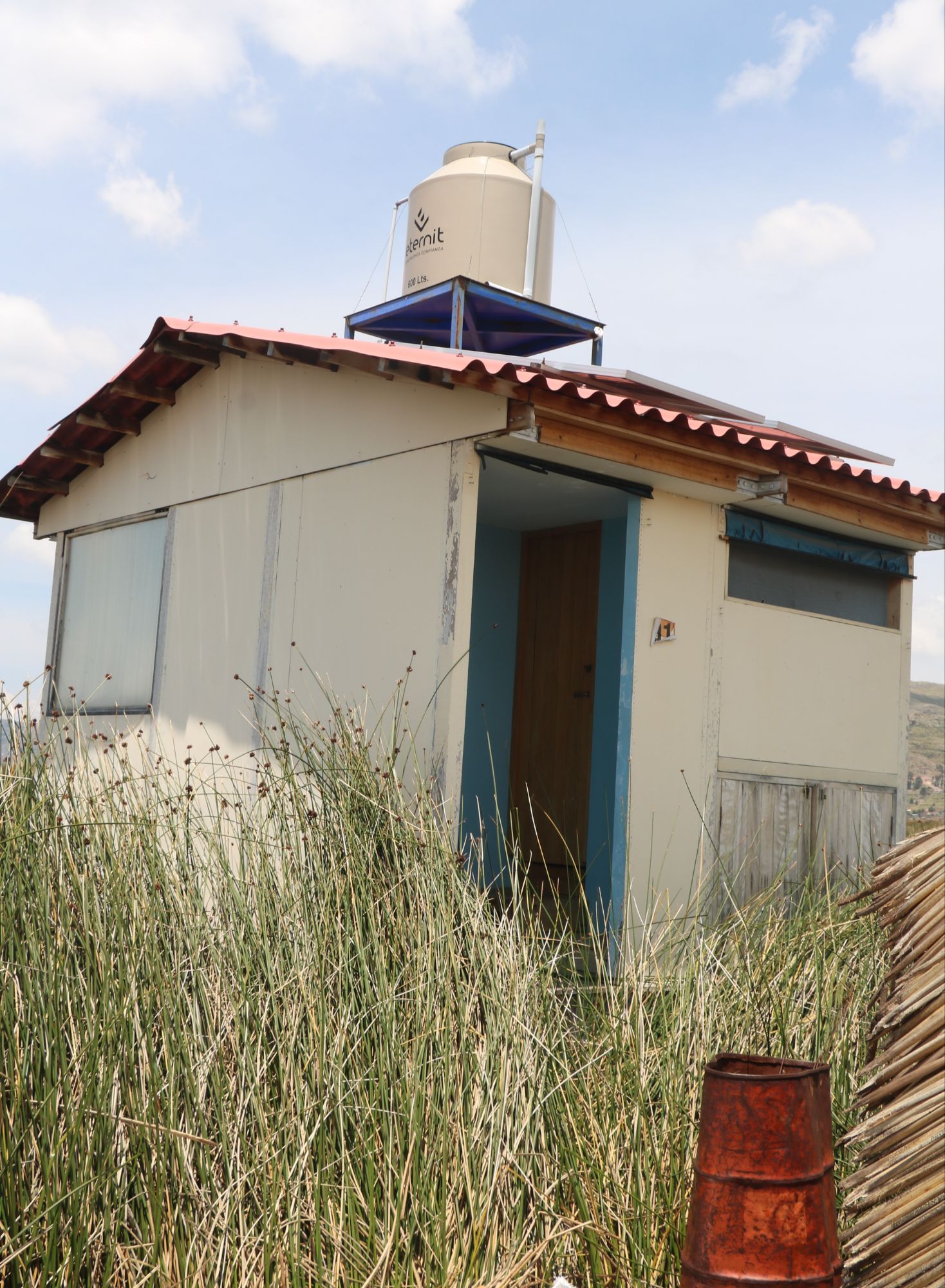

I asked Lucho’s wife, what they used to do before the new toilets were installed She said they would go in their boat to a nearby island which served as an open-air latrine” This practice had to eventually stop to avoid excessive pollution to the lake. Lucho added that if one had a touch of diarrea, the old system was certainly a bit on the awkward side.
Cooking is done using bottles of liquid gas, although in dry weather the tortora reeds serve as a cheaper fuel for cooking.
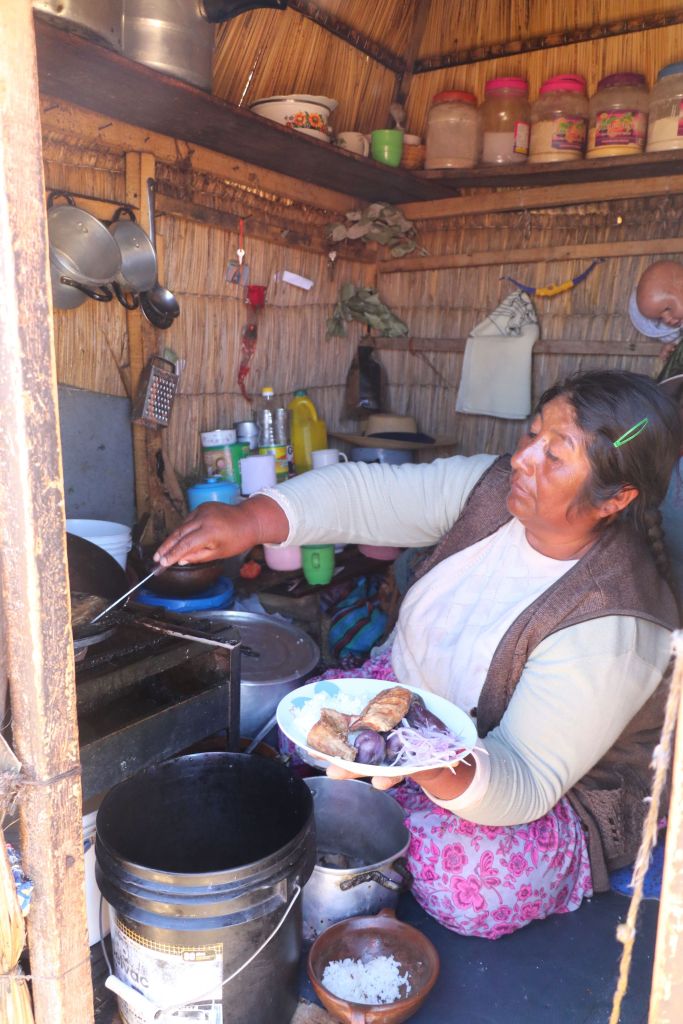
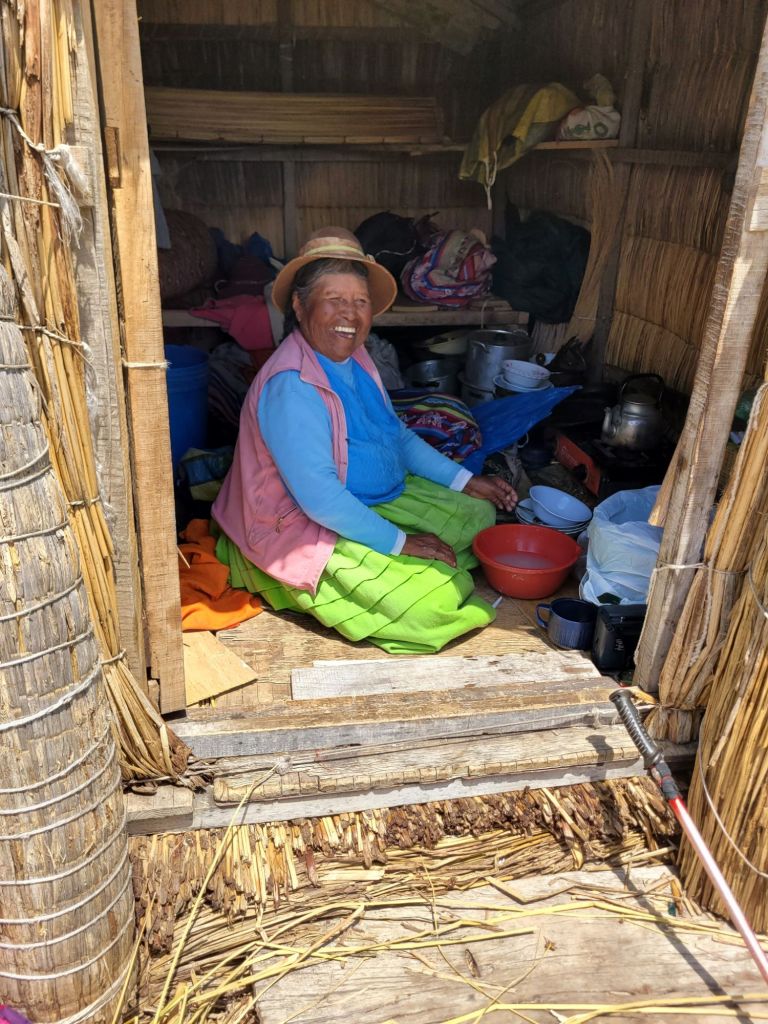
Fire on the islands is always a danger. When using totora reeds for fuel, they cook on a flat stone with a specially designed ceramic ccooker, just as many generations have done before.
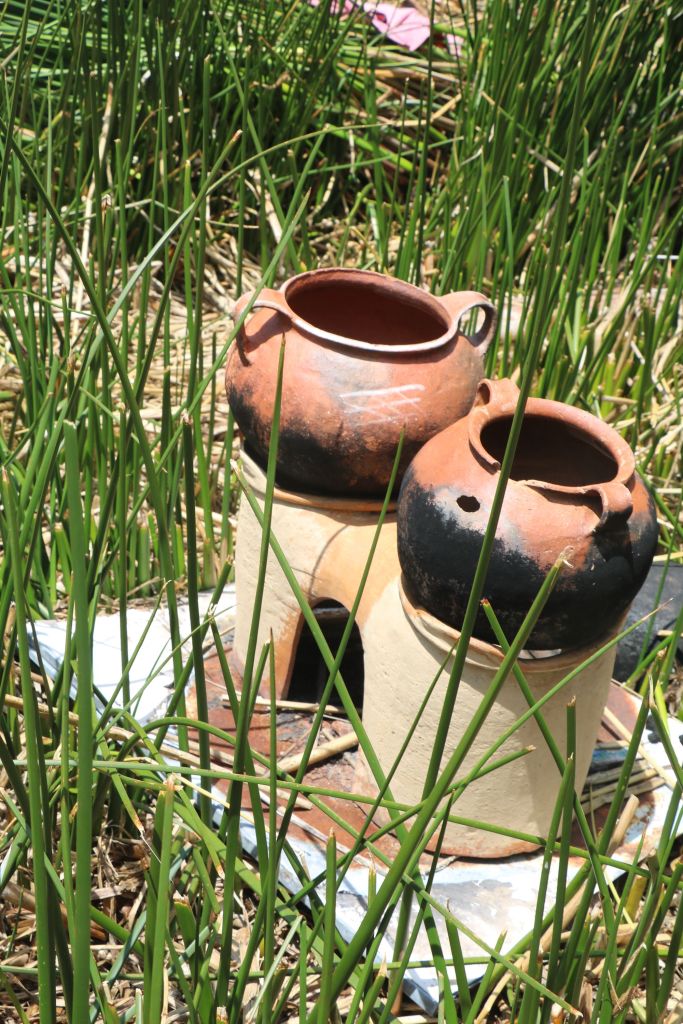
On one of the islands there is an infant and primary school which teaches students in both the languages of Aymara and Spanish. For secondary education the children have to go to the mainland. There is also a small state-run medical post on another island which deals with minor ailments.

Neither Walter nor Lucho could tell me how many generations of Uros have lived on the islands. According to Lucho it was “before memory” He is not far wrong. According to an article in Google, recent genetic studies indicate that Uros descendents may have been the first settlers to arrive at the lake 3700 years ago.
Some of the younger members of the community have left the islands to seek their fortune in the big cities. However, the customs and traditional way of life are still alive and thriving in these modern times.
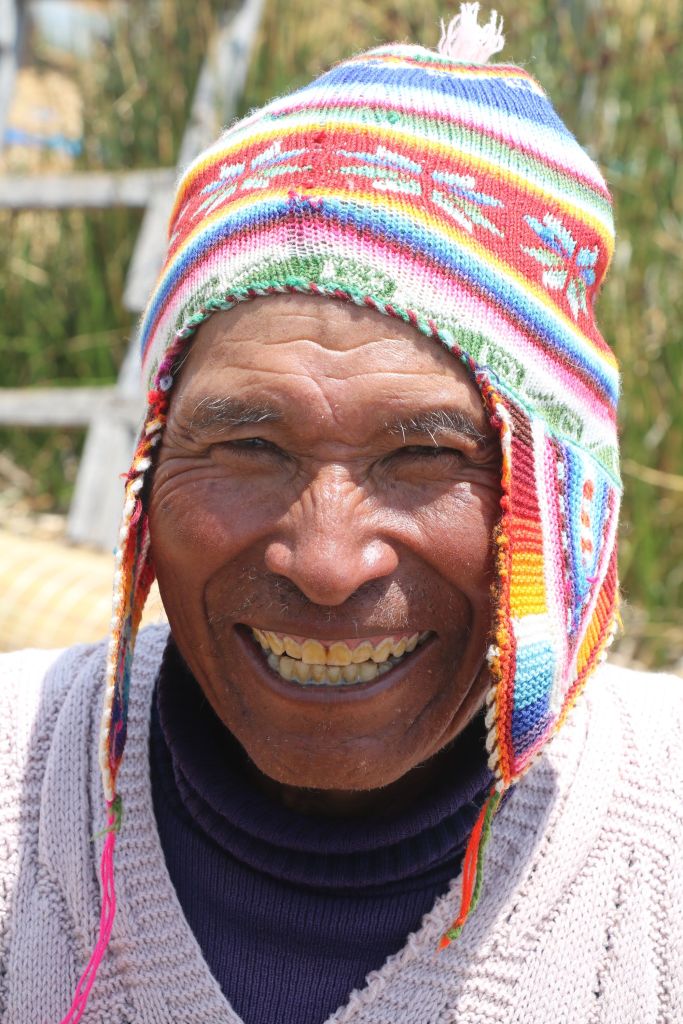
I asked Lucho if he would live anywhere else. His answer……..”This is where I belong. My family roots have been here for centuries. I am seventy three-year-old. I was born here and I will remain here. I have my family, my work and all that I need. And to end with, he added…. “Me? What the devil would I do in Lima?” and gave me his typical wide smile and a chuckle. We can certainly learn a lot from him.
Here are some galleries of other photos taken during the visits.
(Click and scroll to see images)
Life on the Floating Islands
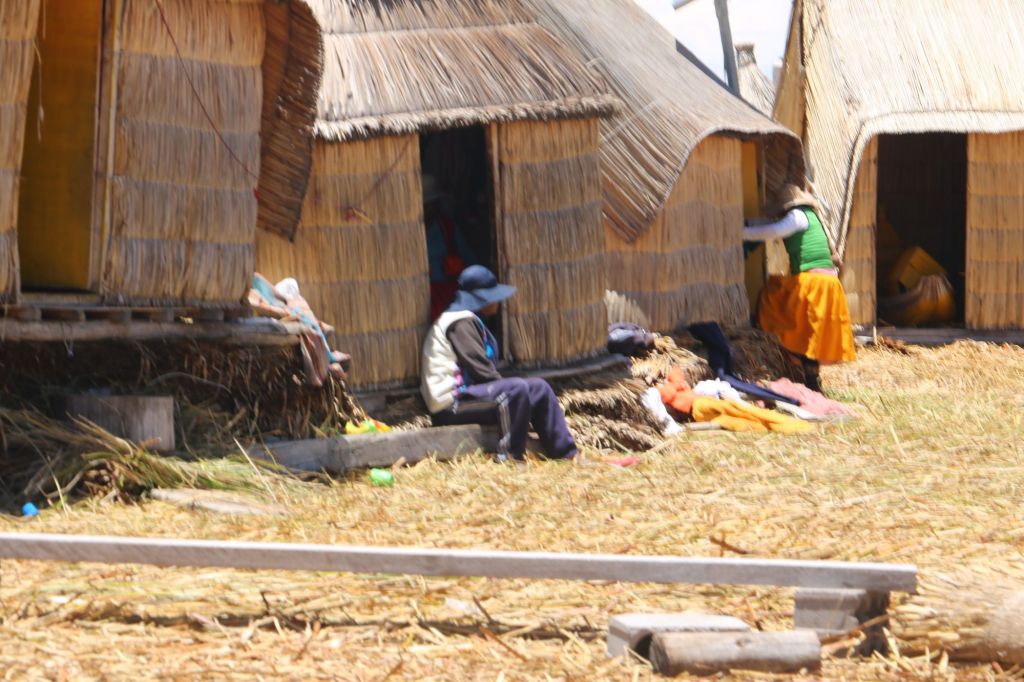
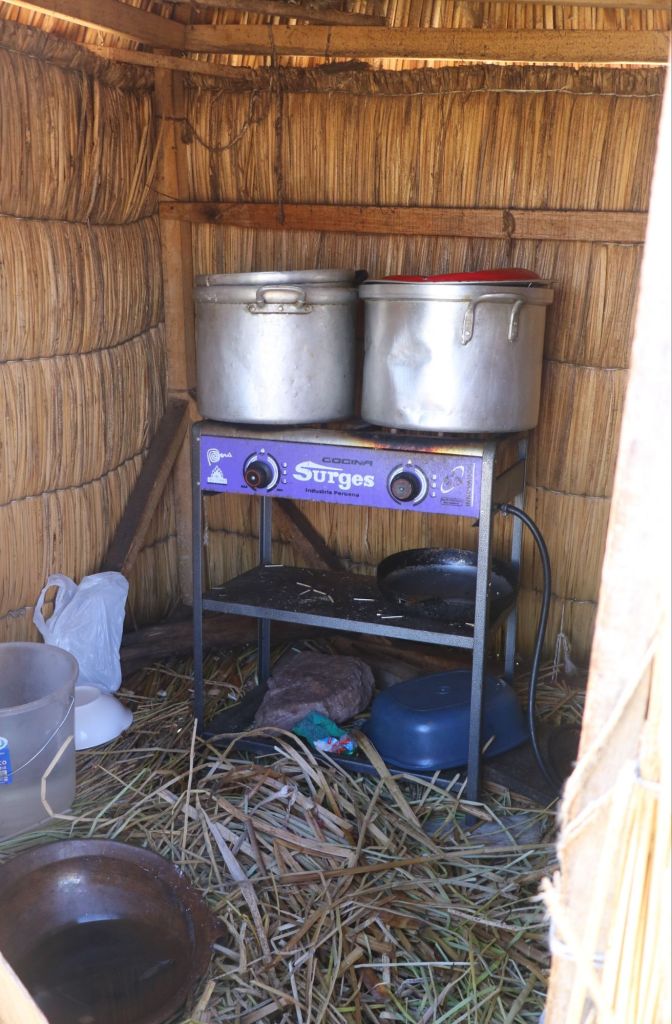
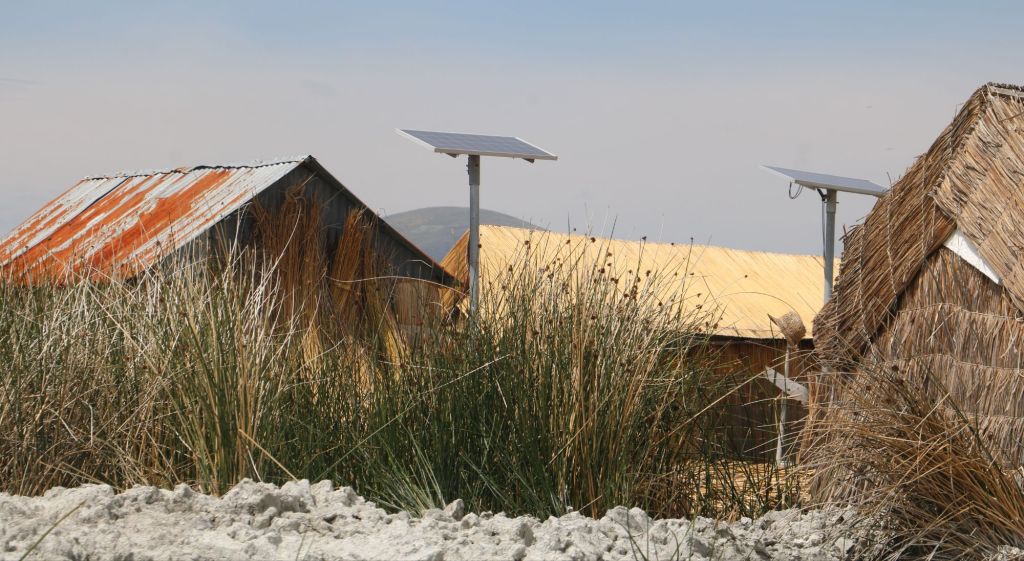
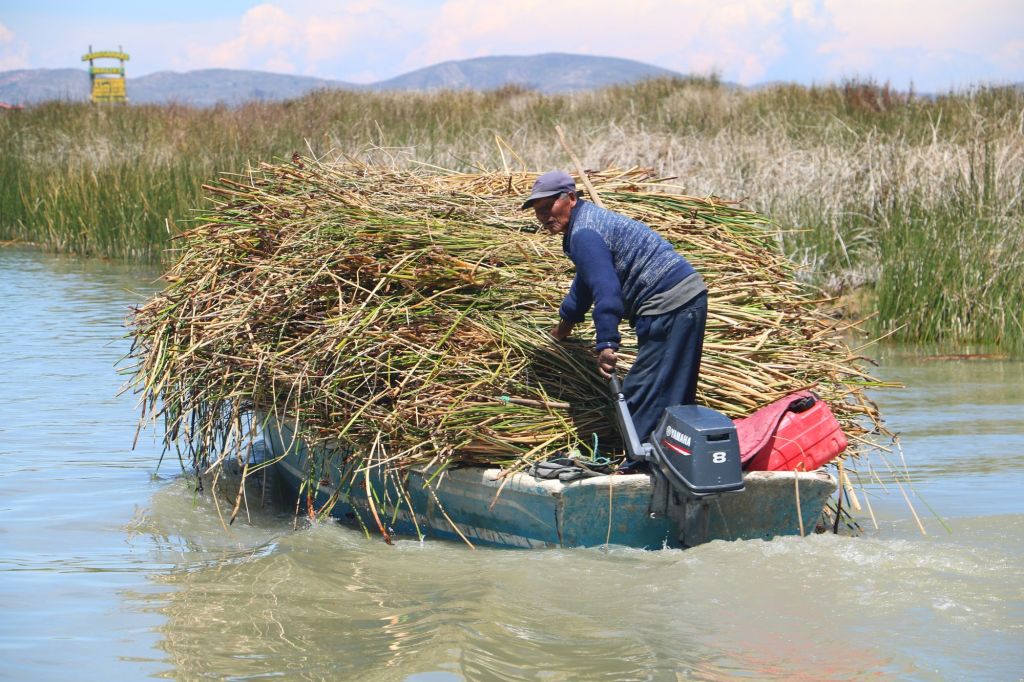
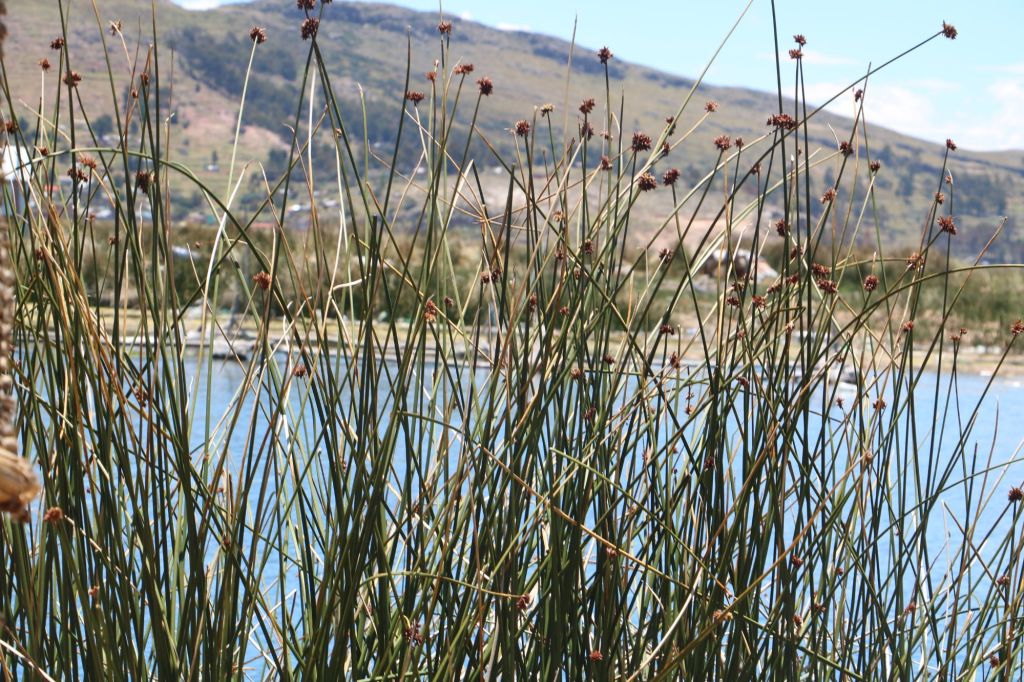
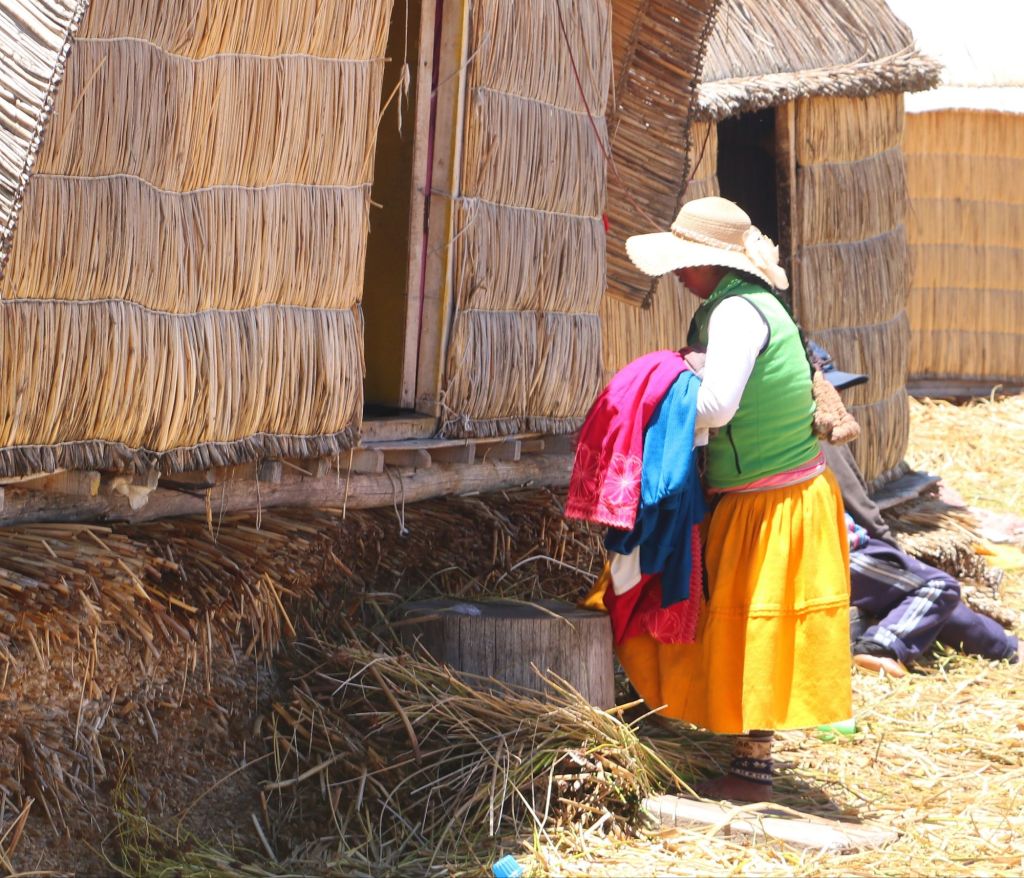
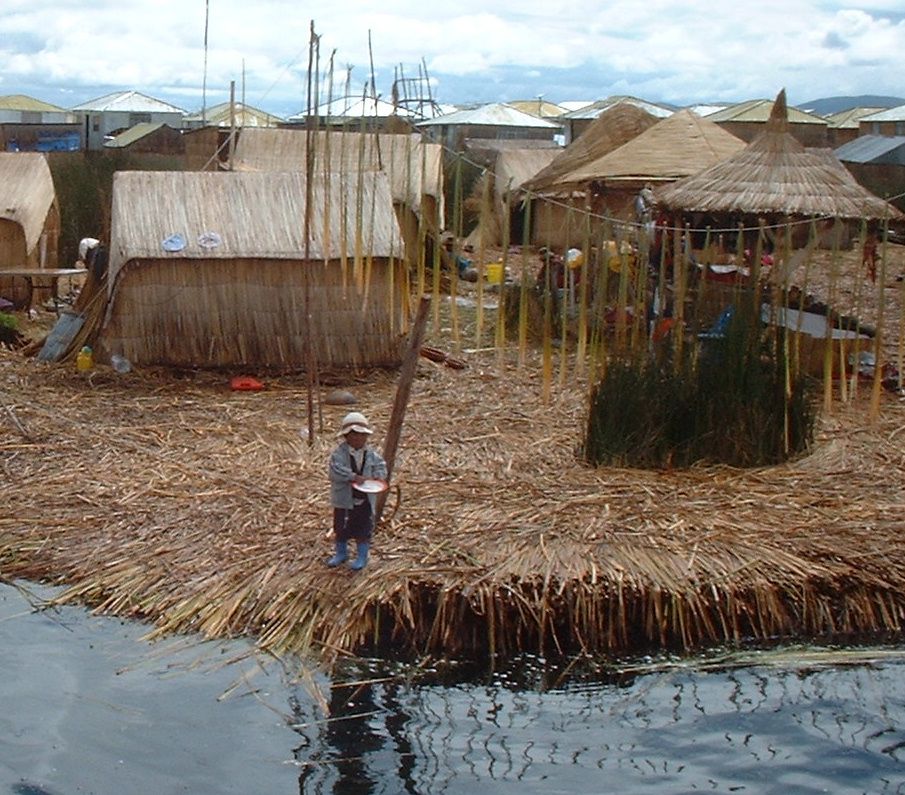
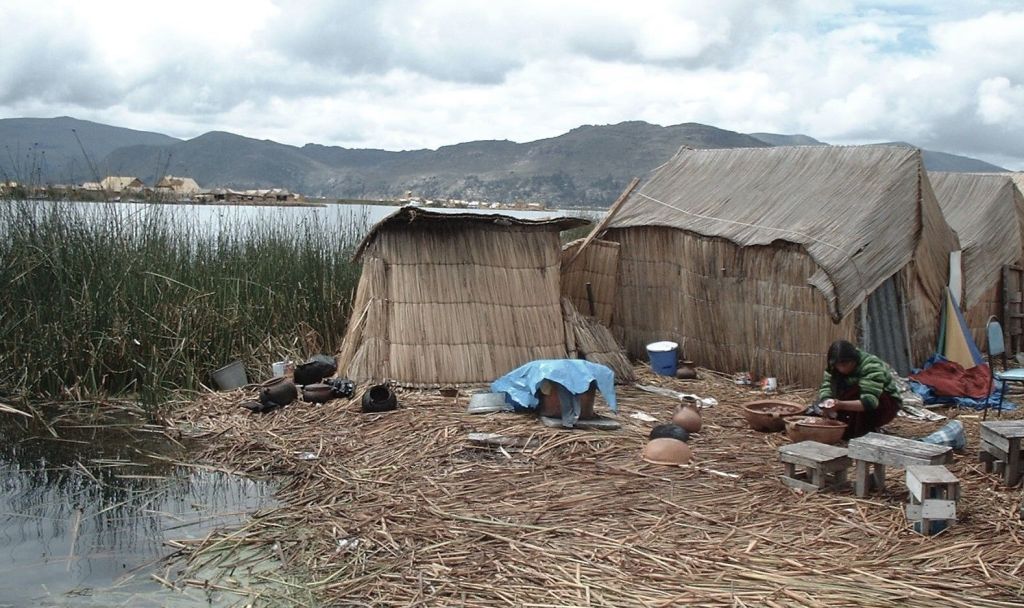

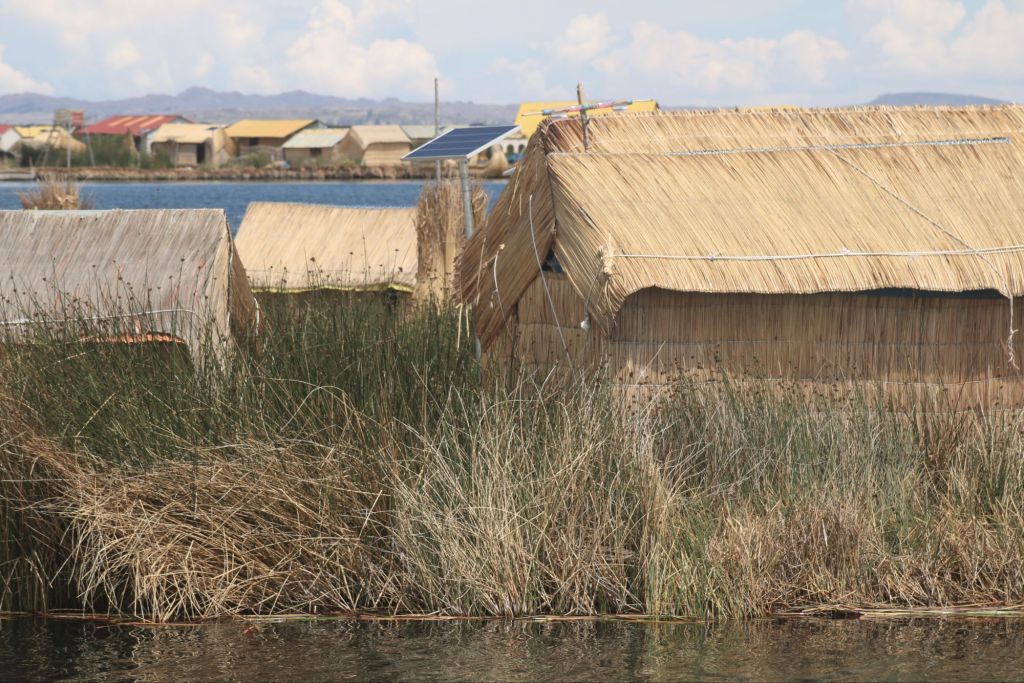

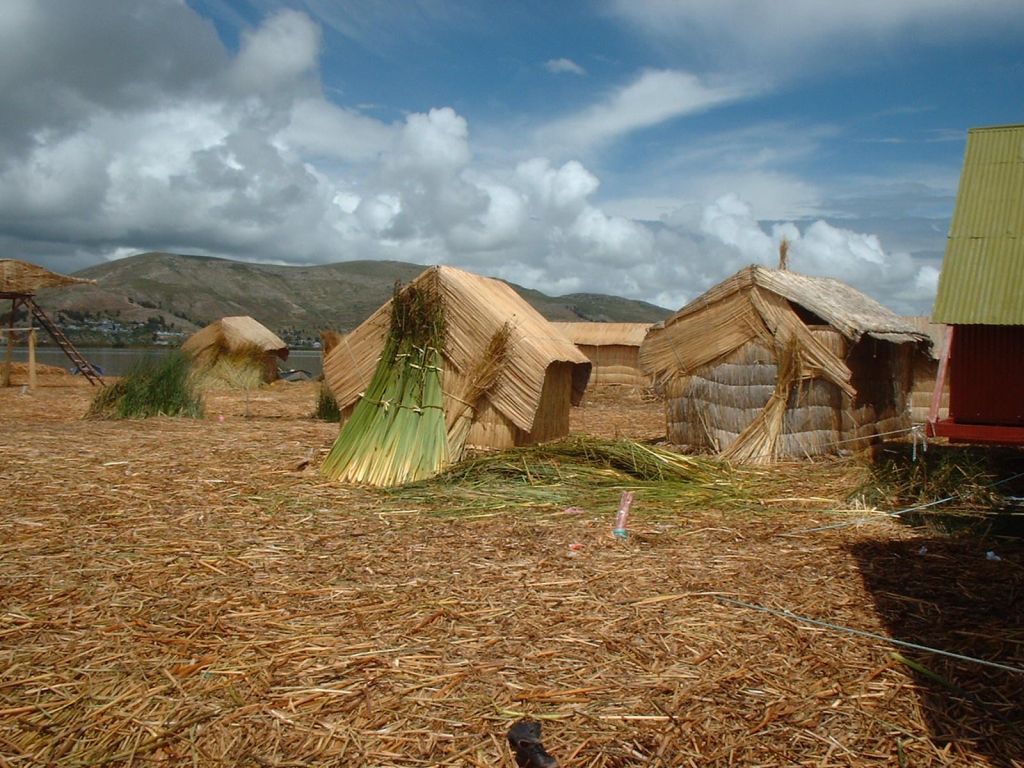

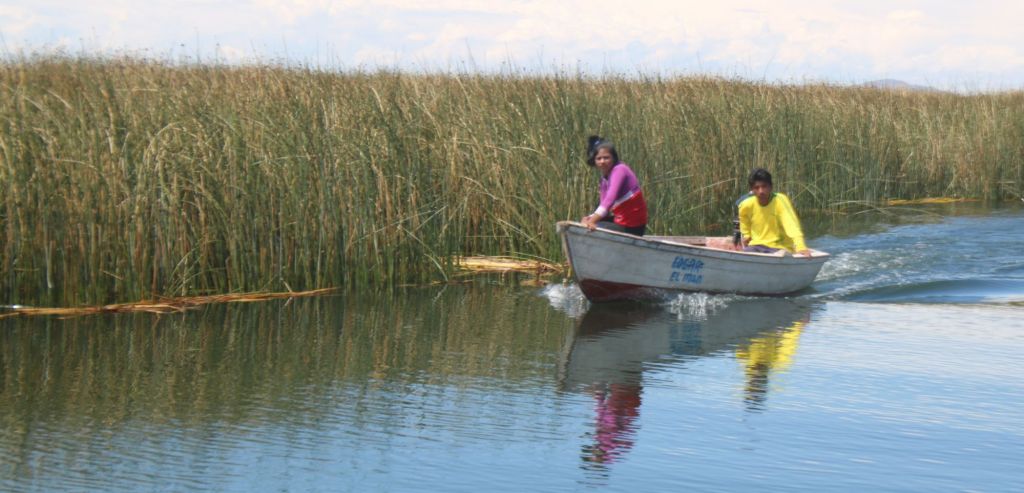
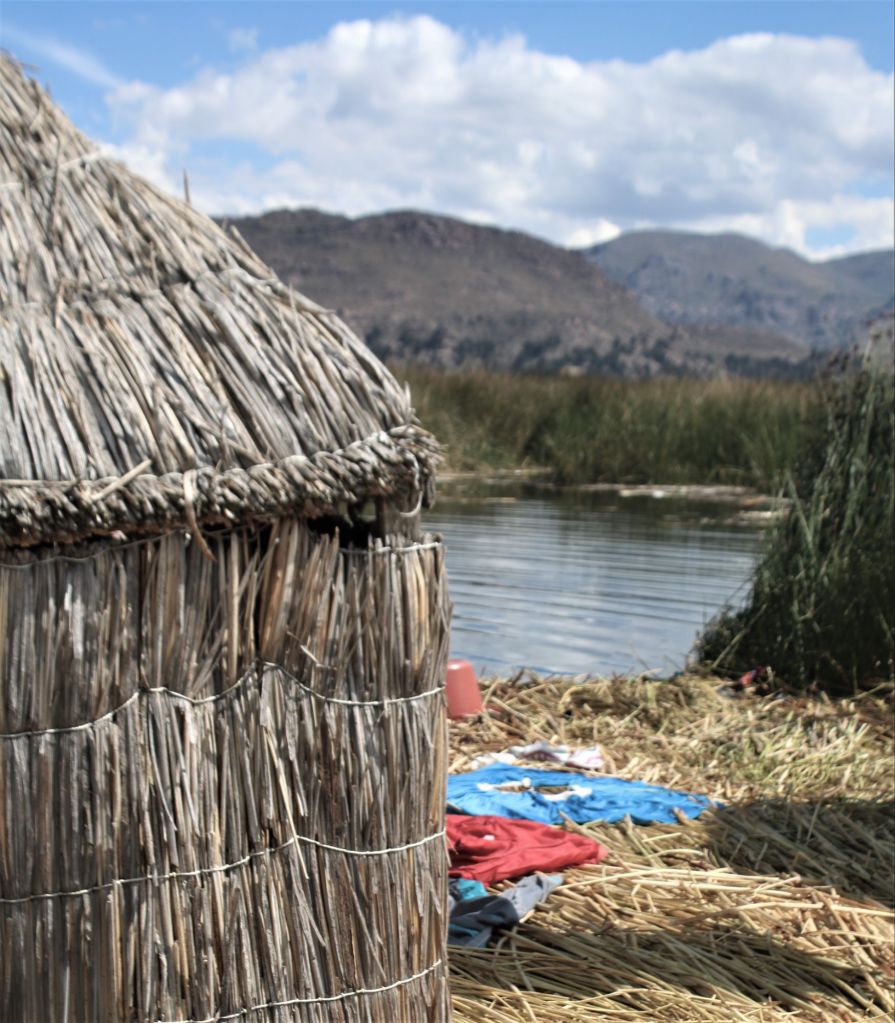
People on the Floating Islands
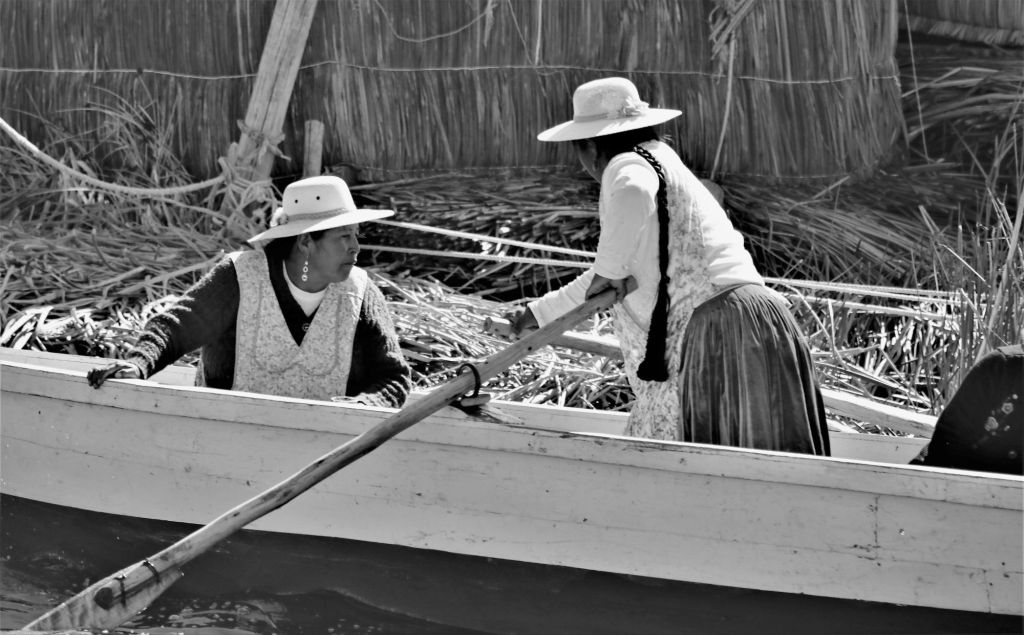



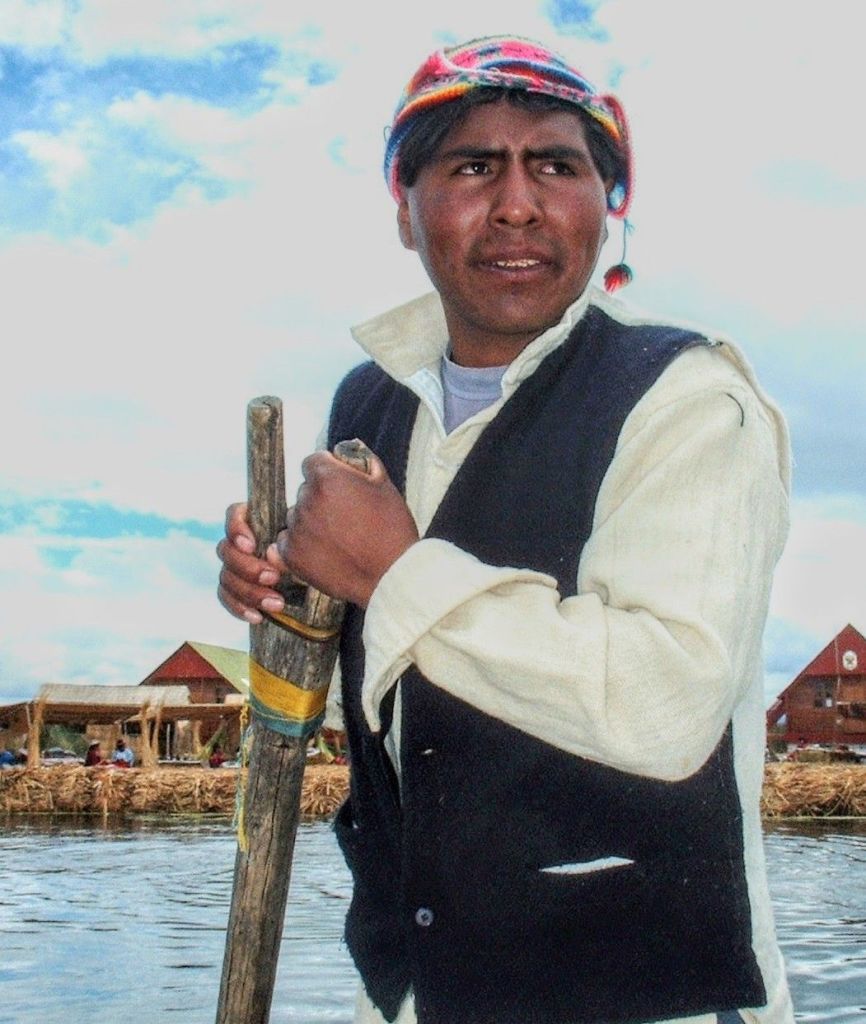
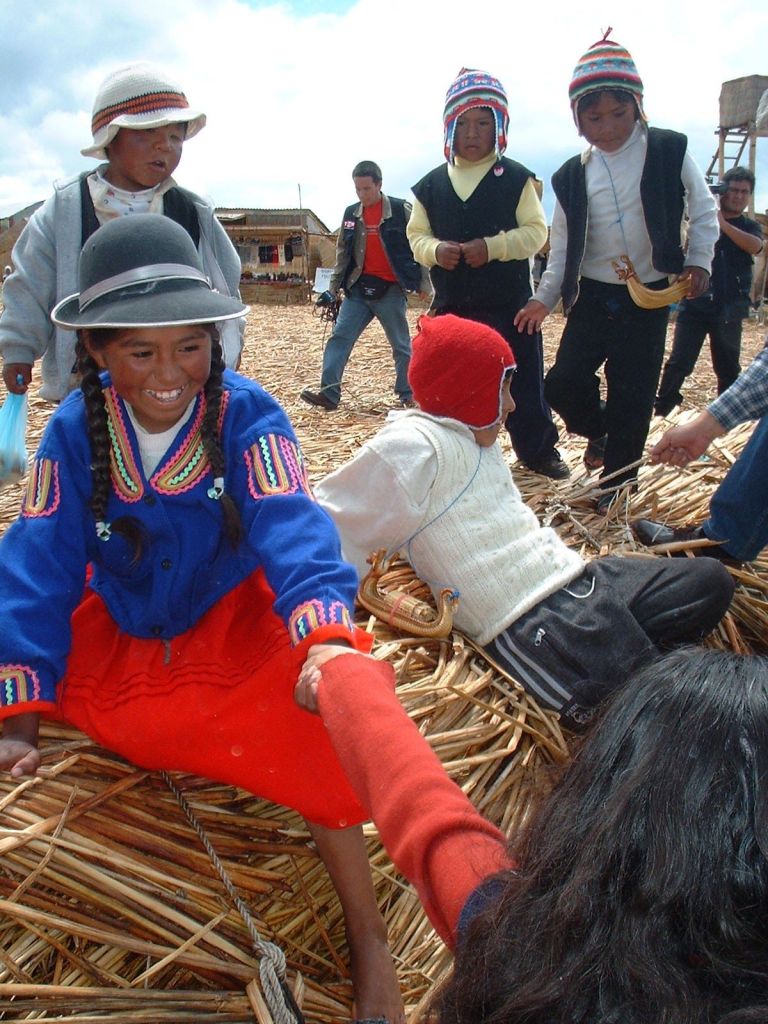








Leave a comment